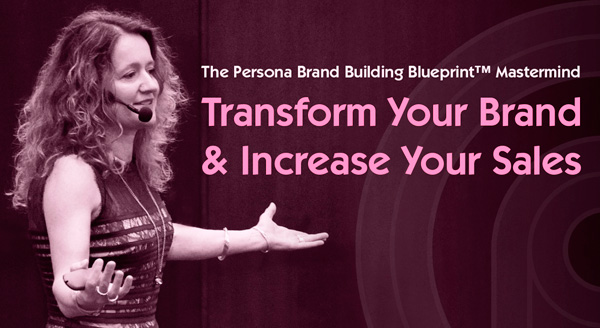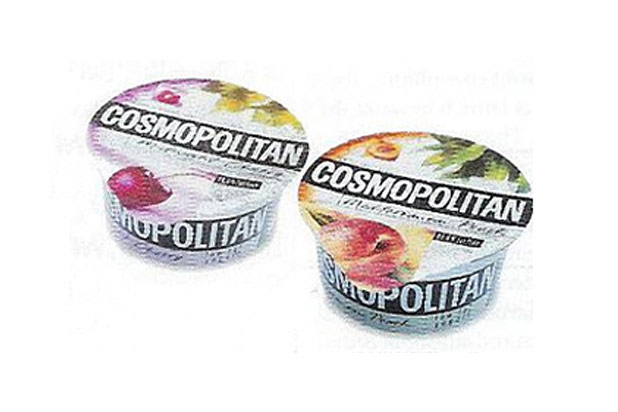5 Red Flags That It’s Time For A Brand Audit Health Check
/0 Comments/in Brand Audit, Brand Auditing, Brand Audits /by Lorraine CarterA brand audit is the methodical examination of the current health of your brand. How strong is it? Is it communicating consistently? When a company takes measures to improve brand consistency, it typically results in an average revenue increase of 23% [1].
However, if your branding is inconsistent—or worse still, nonexistent—overall performance is poor so resulting in low profits.
Despite the proven correlation between good brand health and high revenue, though, branding is seldom the first factor executives look to when profits head south.
This is a misstep because branding–not marketing or design–is the bedrock foundation underpinning your whole business. In short, you need to ensure your brand strategy is on the money if you want your profits to increase.
If you’re experiencing any one of the symptoms listed below, poor brand health is more than likely the root cause of your problems. A brand audit can help make the diagnosis and identify how to remedy the ailment.
Brand Audit Red Flag #1: Slumping Sales
Founded in 1916, Keds has long been a footwear staple. Known for introducing the first rubber-soled shoe (which we know by its more common name, the sneaker) the brand enjoyed popularity throughout the 1990’s.

Keds first sneaker – Image via Vice
In the late 90’s, however, the brand began to fall out of fashion. Though neither the product nor the quality had changed, the audience had. Women who had spent the early 90’s watching Saved By The Bell’s Kelly Kapowski wear Keds had aged out of that demographic and ditched their Keds in favour of more modern, sophisticated footwear.
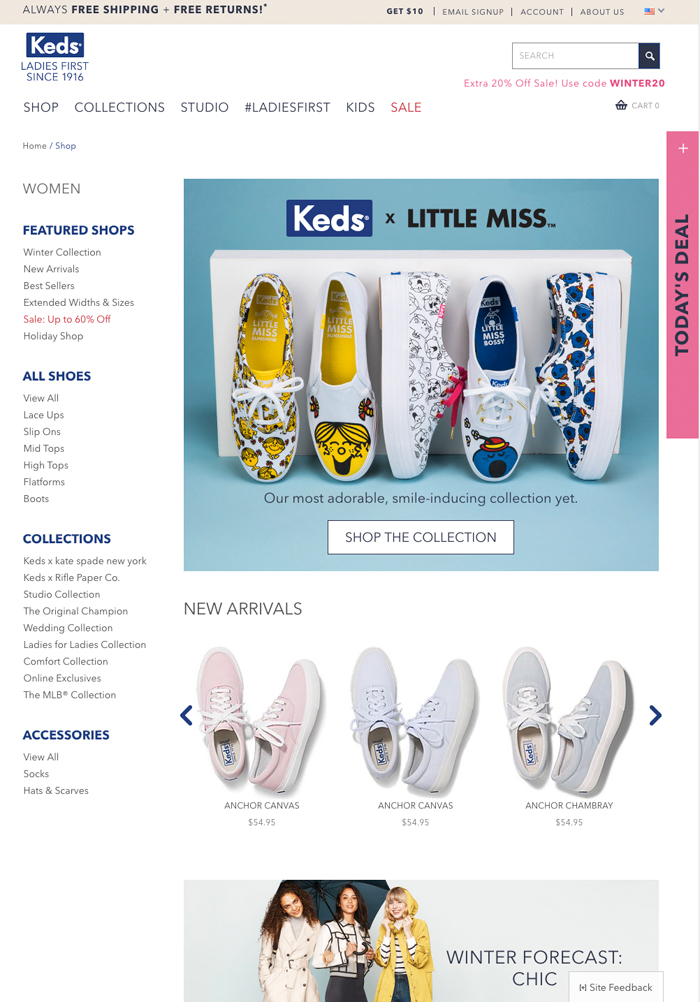
Image via Keds
In 2012, Keds corrected course by rethinking its brand strategy. The company rebranded as a champion of modern women, introducing a refreshed brand mission to “[celebrate] amazing women…who are blazing new trails every day.” The campaign was spearheaded by fresh-faced brand ambassador Taylor Swift. By 2016, Keds reported three years in a row of compound annual sales growth rates in the mid-teens [2].
If sales have taken a nosedive, your sales, marketing and product teams might not be entirely to blame. Don’t discount the possibility that your brand no longer resonates well with customers. A brand audit will uncover this disconnect and help you redirect your brand strategy to fix slumping sales.
Related: Brand Audits – How to Use One to Grow Your Profits
If you’re considering giving your brand a health check and you’d like professional brand strategy input or want your brand audit done for you with access to the whys, whats and hows, and all the other critical factors in the brand audit process then give us a call at +353 1 832 2724 (GMT 9:00-17:00) to discuss your brand audit health check requirements or drop us a line to [email protected]
A brand audit from Persona Design will give you insights into your brand’s impact and performance in the marketplace and, most importantly, why sales and profits are falling and where you can change course, innovate and develop to grow your business.
Alternatively book one of our transformational workshops, brand building intensives or masterclasses where you work on your brand with our direction and tutelage.
The Persona Brand Building Blueprint™ Mastermind empowers you to build your brand strategy, raise the visibility of your brand, increase sales, reduce customer acquisition costs and position your brand as the №1 choice for your customers.
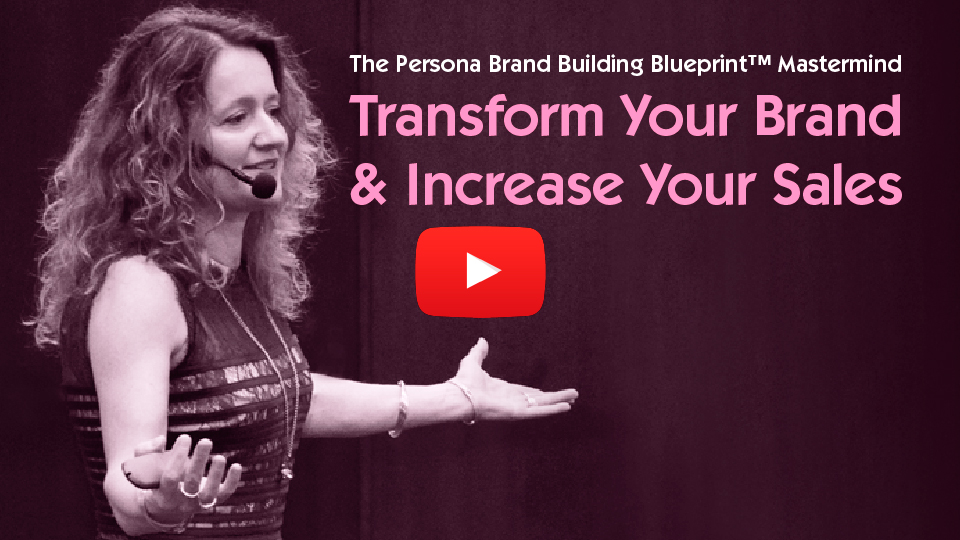
Build your standout brand at the Persona Brand Building Blueprint™ Mastermind with Lorraine Carter
Brand Audit Red Flag #2: Stagnant Growth
In 2015, nutrition bar startup RXBar had been in business for two years. Grown from humble beginnings in its founders’ kitchen, the company had carved out a loyal fan base in the health food niche. Though sales were enough to keep the doors open, growth had flatlined. The brand struggled to land itself in major retailers like Trader Joes, which was a critical step in reaching the next level of sales and brand awareness.
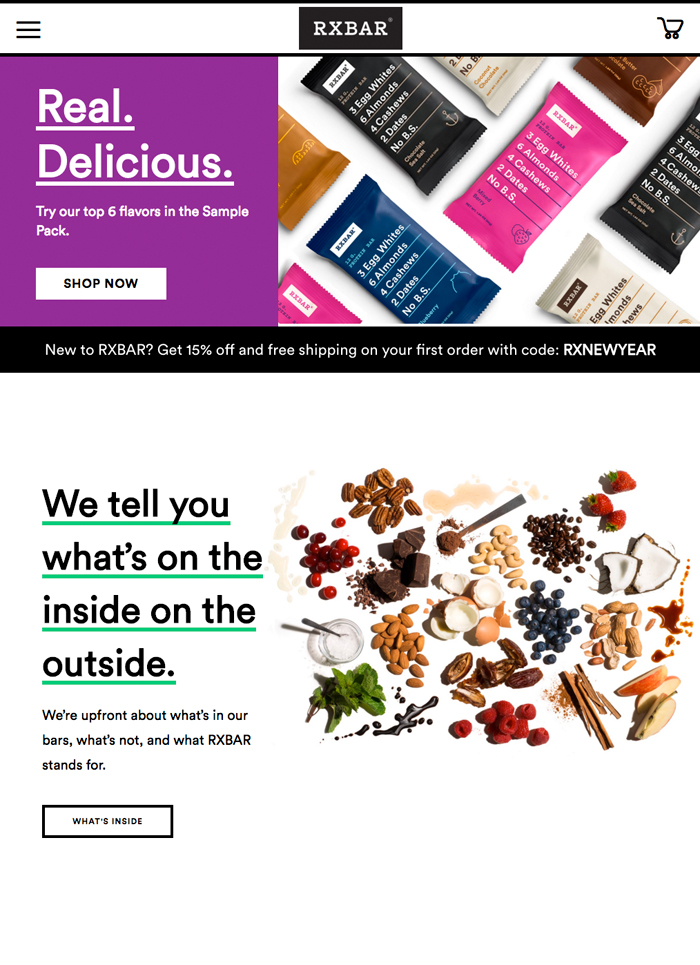
Image via RXBar
Related: Boring Brand? How To Create a Unique Brand and Market Positioning
In response to the stagnant growth, RxBar’s founders took a step back and carefully audited the brand’s position in the marketplace. They discovered two key findings:
- That their product didn’t stand out enough among a sea of competitors, and
- That they were not projecting their brand personality (straightforward, healthy, no-frills) through all elements of the product’s branding and brand collateral.
Related: Brand Audits, Why You Need Them and How to Perform One
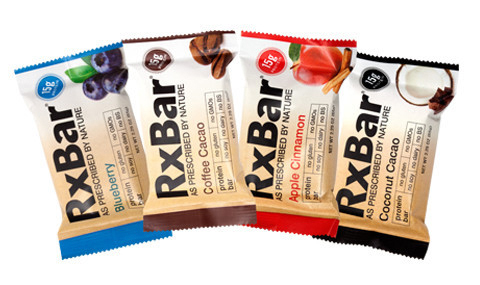
Image via RXBar – Old Packaging Before Repositioning
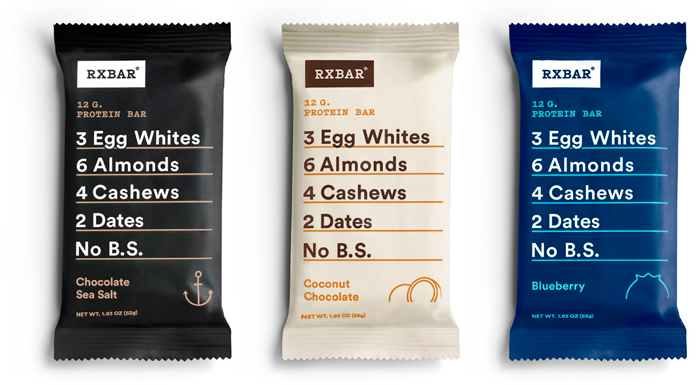
Image via RXBar
Guided by their newly mapped out brand strategy, RXBar completed a major refresh of their brand packaging and brand style to better communicate their core brand values. The product has since become the number three wellness bar sold among natural food retail stores the founders targeted, like Whole Foods and Trader Joe’s. In late 2017 the company was purchased by Kellogg for $600M [3].
If you’re experiencing a plateau or having trouble breaking through to the next level of growth, take stock of your brand health to identify problem areas together with opportunities for improvement and innovation so that you can grow.
Brand Audit Red Flag #3: Spike In Competition
When Domino’s Pizza first opened in 1960, having pizza delivered to your house was a novelty. Because of this, the chain was largely able to sustain itself without paying too much attention to its brand. Today, however, the marketplace has changed dramatically. Pizza delivery places are a dime a dozen—there’s a major amount of competition and the poor health of the Domino’s brand took a toll on its profits and brand position in the marketplace. Customers viewed it as a last resort rather than an option they’d seek out by choice.
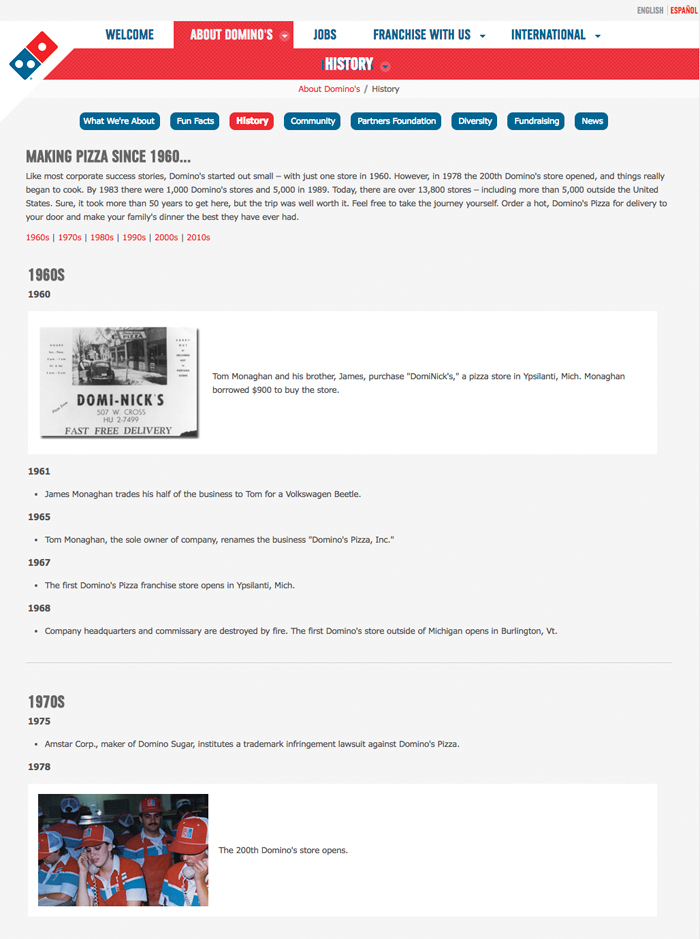
Image via Dominos
By taking a careful audit of the marketplace and the existing brand, Domino’s identified two key areas in which to strengthen their brand: its positioning as a transportation company rather than just a pizza company, and its brand promise to deliver the very best pizza or your money back4. By mid-2017, following these changes, the company reported a 37% jump in profits [5].
When competition is increasing, it’s more important than ever to ensure the health of your brand is in peak condition so you’re different, memorable, loved and standing out from the rest of the pack.
If you’re interested in a do-it-yourself approach to auditing your brand, our Auditing Analysis Accelerator™ is the perfect fit. In this programme, we’ll walk you step-by-step through the process of auditing your brand to identify areas of weakness and map a path to improving your brand health and grow profits. Learn more about our Auditing Analysis Accelerator™ programme here!

Give your brand a health check here using our brand audit programme
Related: Brand Audits: 10 Things Successful Brand Owners and Managers Must Know
Brand Audit Red Flag #4: Change In Business Strategy
If you’ve used the internet, you’ve most likely visited About.com. The digital dinosaur launched as an online information resource way back in 1997. 20 years later, though, Google has cemented its spot as the de-facto resource for all things related to searching the internet, with most other search-style websites unable to compete.
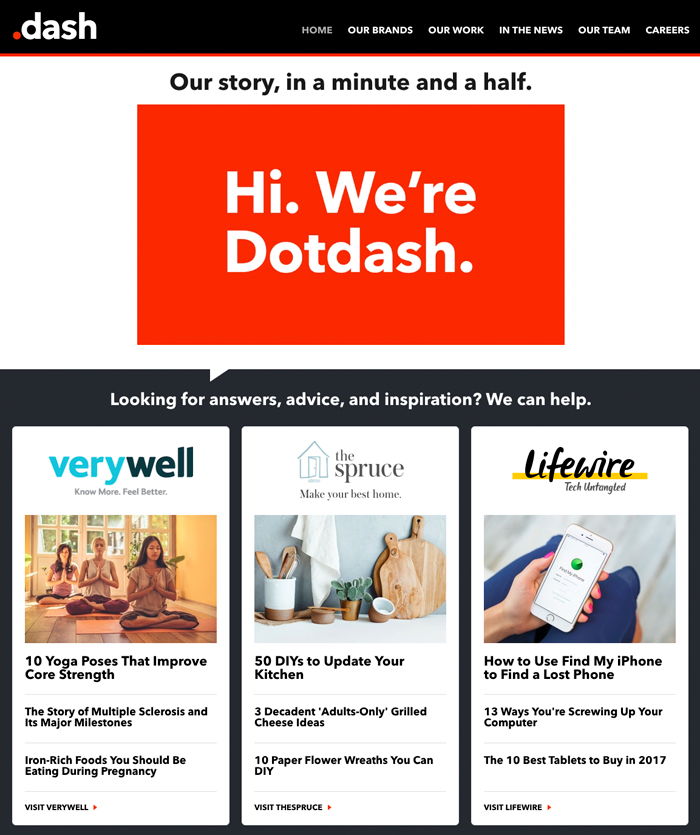
Image via Dotdash
In 2017, the About.com brand announced a major change in its strategy, transitioning from a general-purpose information site to a series of highly niche, vertical content properties including technology, home design, wellness and more. The shift brought with it the need for a careful examination of the brand and the markets it serves–as should all major changes to a brand’s strategy.

Image via Dotdash
The company announced it was retiring the About.com brand entirely in favour of a new brand, DotDash, that aligns with the fresh business strategy and holds several sub-brands underneath it [6].
Even if you’re not completely revamping your company, any change to your strategy (new sales channels, new product line, etc.) indicates a brand audit is prudent because it reveals the areas where your existing brand no longer aligns with the new strategy and helps you map out a plan to correct it.
Related: 7 Ways A Brand Refresh Will Make You More Productive And Increase Sales
Brand Audit Red Flag #5: Change In Target Market
The Metropolitan Museum of Art has been a cultural icon for more than a century. In 2015, the institution began pursuing a new strategy to reach a broader, more diverse audience. Instead of undertaking a major marketing campaign or pledge drive to help reach the new, broader target market, the museum turned its attention to its brand strategy.
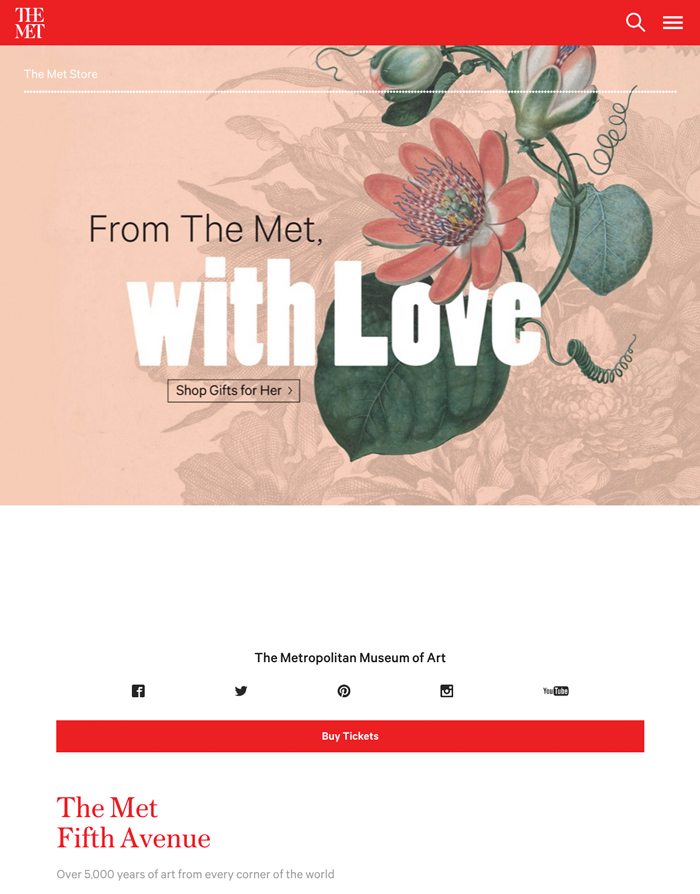
Image via The Met
Until 2016, The Met had used the same logo and visual brand identity for more than 40 years. A brand audit revealed that despite that brand mission to “connect people to creativity, knowledge, and ideas,” [7] many viewed the museum and its programmes as being inaccessible to the average person.
Driven by the new brand strategy to reach and educate as many people as possible, the museum rebranded and unveiled an updated logo and brand identity to visually symbolize the strategy in action [8]. The shift in visual identity coincides with other marketing and communications initiatives are driven by the brand strategy to achieve “greater clarity and consistency in all… materials and communications”, which is essential to a strong brand [9].
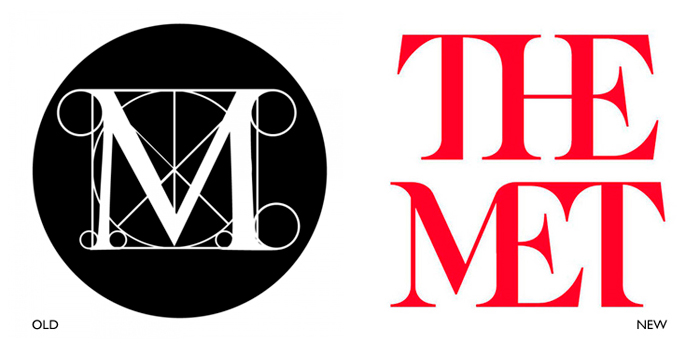
Image via The Met
A change in your brand’s target market is almost always a red flag that a brand audit is in order. Since you’re speaking to a new audience, it’s imperative to examine the differences in how the old versus new audiences understand and relate to your brand. Visual marks like your logo are one important aspect of this, but it’s important to understand that components like design or a logo must be driven by the brand strategy–not the reverse.
Related: Design Is NOT Branding: 10 Things Every Business Owner and Entrepreneur Should Know
The stronger the perceived value of your brand, the more you’re able to charge a premium for what you sell and the more customers you’ll attract. Brand health isn’t merely about recognition or perception; it’s directly tied to profits, growth and strategy. If you’re experiencing changes (either positive or negative) to any of these, it’s time for a brand audit.
When did you last evaluate the structural foundations of your business–that is, the bedrock brand strategy that drives all decisions in your business? If the answer is unclear, the Persona Brand Building Blueprint™ Mastermind is the perfect programme for you.
Join us in this live, two-day brand-building workshop, with like-minded peers, where you’ll work on your brand strategy with our direction and tutelage. You’ll discover how to think strategically about your brand message, positioning and strategy to ensure you’re viewed as the best choice in the marketplace amongst your ideal customers. You’ll also leave after two days with your brand strategy fully developed, ready for implementation to grow your business. Learn more about Brand Building Mastermind and reserve your place here.

Build your standout brand at the Persona Brand Building Blueprint™ Mastermind with Lorraine Carter
Questions To Consider:
- Have you recently seen a drop or plateau in sales? In what ways might your branding be to blame?
- Who are your major competitors? How strong are their brands, and how well do they resonate with customers?
- Have you recently made any changes to your business strategy? Opened up new sales channels? Introduced new products? Expanded to a new market?
- In what ways have your target market, brand strategy, and goals as a company changed since your last evaluation of your brand health using a brand audit?
Sources
- https://www.lucidpress.com/pages/resources/report/the-impact-of-brand-consistency?source=blog
- https://www.thestreet.com/story/13453790/1/keds-president-on-how-to-keep-a-100-year-old-brand-on-its-toes.html
- https://www.inc.com/magazine/201706/stephanie-schomer/rxbar-protein-bar-design-awards-2017.html
- https://hbr.org/2016/11/how-dominos-pizza-reinvented-itself
- http://www.businessinsider.com/dominos-pizza-earnings-q1-2017-4
- https://www.inc.com/jeremy-goldman/looking-to-future-aboutcom-rebrands-itself-as-dotdash.html
- https://www.metmuseum.org/about-the-met
- https://www.nytimes.com/2016/02/19/arts/the-met-and-a-new-logo.html
- https://www.metmuseum.org/blogs/digital-underground/2016/fresh-digital-face-for-the-met
Brand Audits – How to Use One to Grow Your Profits
/0 Comments/in Brand Audit, Brand Auditing, Brand Audits, Brand Health Check, Brand Recall, Brand Relevance, Brand Revitalisation, Rebrand, Rebranding /by Lorraine CarterPerhaps you’ve seen some of the headlines. This one from Bloomberg pretty well sums up the lot: “Snoopy, Loved as Friend, Lacking as Leader, Gets Boot at MetLife.”[1]
Yes, after a 30-year run, MetLife is dropping Snoopy and the Peanuts gang. If you’re wondering why a company would break up a winning partnership and transform a brand that has worked for three decades, you’ve come to the right place.
While the decision to drop the iconic dog and his cartoon friends may seem capricious, you’ll see that, in fact, this is the case of a company that understands the critical connection between its brand and its business decisions. Markets change, new trends emerge, disruptive competitors alter long-standing rules and customer preferences evolve — all of which impacts your brand and consequently your business strategy.
Regardless of their size, companies that are trying to stay relevant, keep growing, expand their customer base, maintain high recognition and recall and convert awareness into greater familiarity are constantly wrestling with questions about their brands. And the most effective way to answer those critical questions is through a brand audit; see one of our previous posts entitled “Brand Audits: Why You Need Them and How to Perform One.”
Why is this important? Consider the findings in the 11th annual Accenture Global Pulse Survey: Once you lose a customer, 68% will not come back.[2] If better brand management can help retain more of those customers, then you need to invest the time, the thought and the effort into ensuring that your brand is delivering. And a brand audit is one of the most effective tools to measure and evaluate your brand performance.
“There is only one boss. The customer. And he can fire everybody in the company from the chairman on down, simply by spending his money somewhere else.”
Sam Walton
What’s in a Brand, and Why Brand Audits are Key to Growing Profits
If you want to evaluate your brand in terms of its capacity to deliver profits or return on investment (ROI), it pays to be ruthless in your analysis. In other words, take a page out of Forbes and its technique for assessing the value of a brand.[3] When compiling its annual list of Most Valuable Brands, the magazine’s analysts focus on the numbers — not “fuzzy consumer surveys” — and the ability of the top brands to generate revenue.
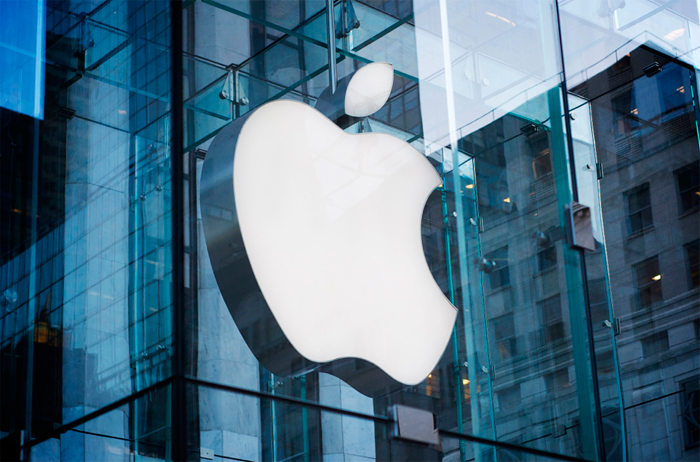
Image via livesicilia.it
In 2016, Apple again takes the Number 1 spot with Forbes estimating the brand’s value at $154.1 billion — definitely a brand worth polishing. If your brand is worth even a fraction of that, you can see why your brand deserves more diligent attention. And even if it’s not there yet, you can appreciate the potential, which makes a brand audit an invaluable tool for brand growth. Any asset with this much value (or potential value) is worth caring for with a regular health check.
And Speaking of Brand Value…
The findings of The Chartered Institute of Marketing’s survey indicate that 75% of marketers consider their brand value and positioning when making any major business decisions. However, respondents also acknowledged weak follow-through and a lower brand experience for customers when management, employees and customers fail to understand and/or appreciate the brand’s role in the business.
Takeaway: A brand audit is not a fluffy light weight marketing exercise. It’s a strategic tool capable of giving you valuable insight into aligning your branding with your business decisions, and needs to be understood by management and employees alike.

Image via The Chartered Institute of Marketing exchange.cim.co.uk
Case Study: MetLife. Navigating Life Together
This video from the Wall Street Journal captures clips from MetLife’s long association with Snoopy. But in its October 20, 2016 press release, MetLife global CMO Esther Lee explained the decision to move away from Snoopy and the Peanuts gang: “We brought in Snoopy over 30 years ago to make our company more friendly and approachable during a time when insurance companies were seen as cold and distant…as we focus on our future, it’s important that we associate our brand directly with the work we do and the partnership we have with our customers.”[4]
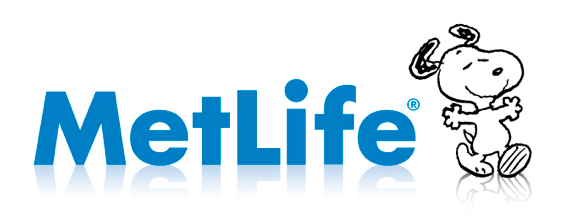
Image via MetLife
Today, MetLife is in the middle of a significant corporate realignment. It’s spinning off its domestic retail life insurance business in the United States to focus more on group life insurance sales and international business operations. Consequently the old logo must give way to a more corporate and international style reflective of its changed positioning:

Image via MetLife
But a rebranding of this magnitude, the decision to drop the cartoon characters, create a new logo, and change the tagline are only part of the process. It’s the result of a thorough analysis and understanding of the brand —in terms of the company, its competition and its customers and prospects.
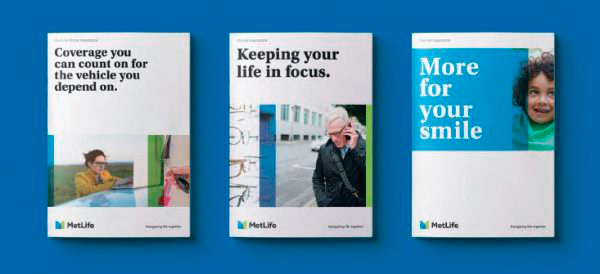
Image via MetLife
You face many important tasks as you begin a rebranding process — potential pitfalls and mistakes as well. To help you prepare, download our free report, “Top 20 Rebranding Mistakes to Avoid.” Sign up with your name and email address, and we’ll send you a copy.
Are You In Need of a Brand Audit?
A total rebrand or brand refresh is only one reason to consider a brand audit as a place to start when determining if your brand is performing. Listed below are key business reasons for conducting a brand health check…and why your brand may not be delivering significant profits:
- Losing market share to your competition in your industry or product segment
- Your business or organizational focus has changed
- Poor performance in online search, no longer landing on page one with Google or insufficient impact in digital media
- Numerous business changes coupled with endeavours along the way to adjust your brand may have undermined your brand identity and created confusion both in your customers’ minds and amongst your internal team and stakeholders alike
- Your sales are declining and your marketing strategy is not delivering the required results
- When questioned about your brand, customers and prospects seem to have little or no brand recognition and low brand recall
Brand Audits Help You Grow Profits
When you conduct a brand audit effectively, driven by clear objectives, you can:
- Pump fresh interest into your brand
- Present a more consistent (and stronger) identity aligned more closely with the goals of the business
- Evaluate your strengths and weaknesses so you can identify what to build on and what to work on, or eliminate and where to improve performance
- Gain a greater understanding of your customers — what they like, what they need and what they want from you and what they don’t like — and how your business and your brand can better meet their needs
- Take advantage of the brand audit process to build greater communication internally across the company (with employees and partners) and externally (with customers, prospects, general public and target markets)
For additional resources and tips, check out our article “Brand Audits: 10 Things Successful Brand Owners and Managers Must Know.”
Start Your Brand Audit with Well-Articulated Objectives
Start your brand audit with a thorough understanding of what you want to accomplish. What are your objectives? Are you trying to determine why your market share is dropping? Do you need greater insight into how to reposition your company going forward? Are you trying to build a recent acquisition or change in direction into your brand image and messaging? Do you need to convert customer or prospect awareness into stronger brand familiarity? Do you need to measure sentiment for your brand in the marketplace?
Even if your brand is performing reasonably well, avoid complacency at all costs — now is the time to give it a health check to prevent any downward turn so you can leverage it more strongly to accelerate your profit growth.
While you’re thinking about these and other questions, take a look at our step-by-step brand audit ecourse. If you want to give your brand a health check yourself, our Auditing Analysis Accelerator™ programme can help you with an under-performing brand, a routine brand health check or a comprehensive analysis to identify your strengths, weaknesses and growth opportunities.
By keeping your focus squarely on your objective(s) you’ll end up with a report, a set of recommendations and a blueprint for going forward that is an actionable document that will help you make the right decisions. You’ll come away with a strategy and a starting point for developing the necessary marketing tactics.
Elements of Your Brand Audit Methodology
There are many ways to audit your brand, and not all audits will require every possible type of analysis. In fact no two brand audits are exactly the same. The depth and scale of a brand audit is dependent on your objectives, resources and timelines. Your questions will help you determine your choice of methodologies and the metrics.
Takeaway: There is no right or wrong brand audit…only the one that gets you the information and answers you need to make the right decisions going forward so you can accelerate your growth.
Here Are 6 Keys Steps and Questions to Get You Started With Your Brand Audit:
Step 1: How does your brand align with your target market?
With your basic questions in hand, you can begin the research phase of your brand audit.[5] You’ll need to collect a lot of background information: Google and Bing searches are a good place to start. You can also hire a professional to conduct an in-depth analysis of your industry. And in addition to visiting your competitors’ websites and social sites, you can collect competitive intelligence through resources such as Hoovers, Dun & Bradstreet, SimilarWeb and Alexa. Some of the topics you’ll want to research:
- Market Intelligence: Market niche, target audience
- Company Information: Mission, vision and Unique Selling Proposition (USP), sales trends, customer support results, logos and brand image documents, brand collateral material
- Industry Insight: Industry trends, competition (who are they and how do they compare in terms of price, support, customer experience, product offerings?)
Step 2: Does your brand deliver on your business objectives? Market intelligence? And industry insight?
With the raw data in hand, you need to assess your brand image, message and actions in the context of your company, your products, your market and the industry. How effective is your brand? Is a weak brand resulting in business being left on the table? Are you losing to stronger, more recognized brands? Do your employees, customers and prospects align with your brand? Can they articulate what your brand stands for and what makes it different to your competitors?
- Discuss the your brand internally with management and employees
- Query customers and prospects with online polls, phone surveys and email questionnaires
Case Study: The IKEA Brand Starts With Its Customers’ Needs
The IKEA Group reminds us that both good business ideas and good branding starts with a thorough understanding of customers and their needs. In “The Story of How We Work,” IKEA has turned the story of how they deliver the right products at the right prices with the right corporate culture into the brand.
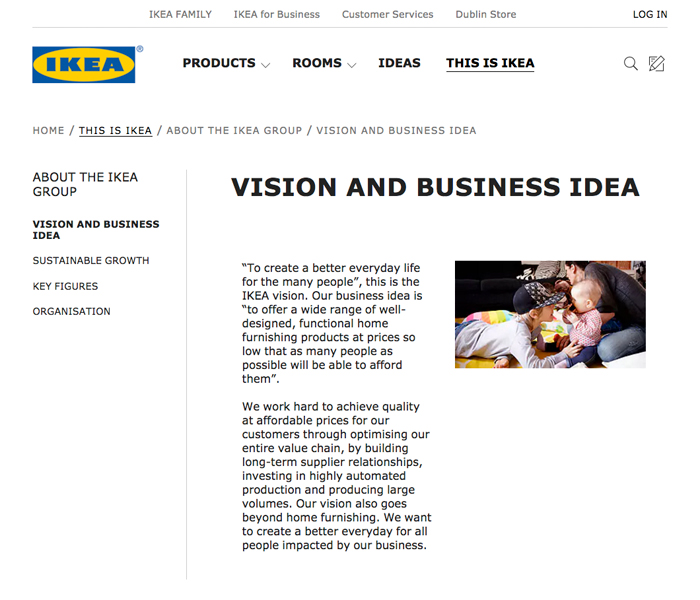 Image via IKEA
Image via IKEA
Takeaway: Using digital illustration to sketch the business process reinforces the how-to and DIY aspects of the IKEA brand. The fact that the story comes full circle—back to the customer—proves that people and their needs are always central to the business and the brand.
Step 3: What’s your SWOT?
Conduct a SWOT-type analysis of your brand to identify and list your brand’s strengths, weaknesses, opportunities and threats.
- What are the best assets associated with your brand — e.g. visual, message, trust? These are strengths you can leverage
- What are your weaknesses and liabilities — e.g. negative press, limited recognition, small audience? Not only do you need to know about any downsides you need to decide if liabilities can be turned around or offset
- Where are your opportunities — e.g. new or untapped audiences, new products well positioned in the market, potential market disruptors? Once identified you can consider the strategy and tactics that will enable you to take maximum advantage of opportunities
- Where are the threats — e.g. new competitors, changing market trends, next-generation technology, challenger brands? Once you know the threats, you can develop ways to mitigate their impact
Case Study: Burberry Leverages its Origins
When Angela Ahrendts joined Burberry in 2006 as its new CEO, she and then Chief Creative Officer Christopher Bailey focused on new and innovative ways to leverage their strength. Burberry asked, “What do we have that they [the competition] don’t?”
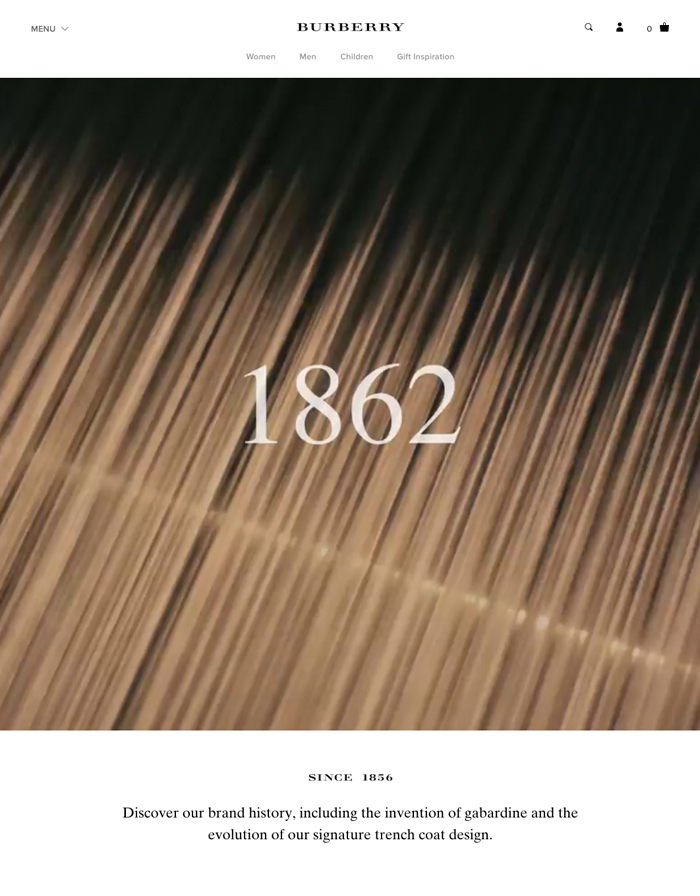 Image via Burberry
Image via Burberry
Takeaway: Burberry went back to its strong roots: British origins and the iconic trench coat. With this insight, the implementation was simply a matter of using creativity in presentation, social media, music and models to build a brand that worked in the 21st century.
Step 4: What’s the brand recognition and recall factor for your visual elements, your messaging and your actions?
Questionnaires, polls and one-on-one conversations will help you understand how effectively your brand is connecting with customers and prospective customers. This is a somewhat subjective process — since you’re relying on people to tell you honestly what they think. It will, however, help you understand the associations and awareness surrounding your brand. Ask customers and prospects about all aspects of your brand, including:
- Logo, colours, taglines
- Brand collateral materials
- Product packaging, trademarked programmes and services
- Customer support programmes
- Consistency of brand across products, websites, marketing materials social sites, etc.
Step 5: Is your social presence aligned with your mission, vision and business objectives?
Given the strong digital presence of most marketing today, you may want to do a social media audit to determine if your brand comes through loud and clear and consistently and congruently on all your social platforms. For example:
- Do you have a consistent brand image and congruent messaging across all your social sites?
- Is your website’s user experience consistent with the brand experience you want for customers and prospects?
- Are you taking full advantage of the features and strengths of each social platform to best position your brand while maintaining consistency?
Step 6: What’s your traffic analysis?
You’ve asked customers and prospects for their opinions about your brand. By measuring online behaviour you can separate what people say from what they actually do and how they respond to your digital brand marketing?
- Are the number of visits to your website, social sites, digital ads increasing?
- How many unique views do you have each month?
- How many are return visits?
- Are your Likes growing along with sales?
- What’s your bounce rate? Are people spending more time on your sites? Are they downloading lead generating brand collateral?
- How many conversions do you have? Are people clicking through, responding to your call to action and/or buying?
An Inspiration and Reminder to Think Different
In 1997, Steve Jobs had just returned to Apple, and one of his first tasks was to rescue the brand. After several years of confusion and poor management, Apple products and the brand itself had declined and the company faced the possibility of failure.
In this video, Steve Jobs explains his plan to revive the business and the brand by focusing not on speeds and feeds (features) but the value of human innovation and positioning Apple as the company that understood, respected and supported those among us who Think Different.
Jobs’ explanation, serves as our reminder to focus our brand audits on our strengths and our customers. We increase our chances of succeeding when our brand audits bring us in touch with our strengths and our customers’ needs and help us put both in the context of our industry, our target markets and business objectives. Writing in Forbes in 2013, Columbia University professor Panos Mourdoukoutas explained brand value: “Those attributes must ‘seduce’ the consumer’s mind, address genuine consumer anxieties and emotions — and be innovative.”[6]
Five Tips for Using Your Next Brand Audit Health Check to Increase Your Profits and Grow Your Business
- Business decisions and brand go hand-in-hand. Tie any significant changes in the business (e.g., acquisitions, future plans, product restructuring) to the brand. A brand audit will help you understand where you stand today and what it will take for the brand to engage customers going forward.
- Focus on context. Your greatest opportunities lie at the point of convergence across company values, customer desire and the state of the market.
- Leverage your strengths. Start from your core values — the attributes that built your business. Then determine how you can carry them forward. Whether it’s a matter of getting back to basics or pumping new life into trusted values, don’t loose what you’ve spent years building. Reassure customers that you are who you’ve always been and will continue to be.
- Reach out to customers. You can’t make business decisions and establish your brand identity in a vacuum. Talk with customers, social and website visitors and, in some cases, random members of the public. Invite them to take part in surveys, phone interviews, focus groups and one-on-one interviews.
- Don’t overlook your digital branding. Today your brand extends to everything you do online — websites, social sites, digital ads, YouTube videos and more. Plus, with new tools and marketing automation technology, you can quantify more of your results. You can see what people are doing and compare results with what they tell you.
[1] http://www.bloomberg.com/news/articles/2016-10-20/metlife-to-phase-out-snoopy-branding-as-ceo-reshapes-insurer
[2] https://www.accenture.com/us-en/insight-digital-disconnect-customer-engagement
[3] http://www.forbes.com/sites/kurtbadenhausen/2016/05/11/the-worlds-most-valuable-brands-2016-behind-the-numbers/#126ce3897383
[4] https://www.metlife.com/about-us/brand/MetLife_Launches_New_Brand-Press_Release.pdf
[5] http://www.inc.com/guides/201105/10-tips-on-how-to-research-your-competition.html
[6] http://www.forbes.com/sites/panosmourdoukoutas/2013/10/05/apples-most-important-branding-lesson-for-marketers/#46c5410e18e2
Digital Brand Identity Essentials – How to Build, Resonate and Grow
/0 Comments/in Brand Audit, Brand Auditing, Brand Audits, Brand Identity Design, Brand Revitalisation, Digital Brand Identity, Rebrand, Rebranding, Revitalized Design /by Lorraine CarterSuccessful branding requires consistent communications both on and offline. The question is, is your digital brand identity consistent and congruent with what your brand stands for? Does your brand strategy fully integrate your digital brand identity? Does it congruently express what you stand for? Is it well thought out and compelling? Does your digital brand identity connect with your customers, serve them and give them great value? Do your customers even care?
As you build your winning brand on its fundamental pillars, you fill its heart with the essential values of your organization, be that a product or service. You craft your brand promise to let people know what your brand will deliver. To make that commitment heard, it’s mandatory that your brand is active and fully engaged wherever your customers (and potential new customers) are. Increasingly, that’s digital and especially via mobile.
Google Goes Mobile-First
Google got everyone’s attention in April 2015 with an update that put mobile-first indexing on every marketer’s lips.[1] In today’s “always connected” marketplace, small businesses (including those with a bricks and mortar presence) must think digital…more specifically, mobile first, desktop second.
Years ago, marketplace presence might have meant a choice corner shop location in a vibrant neighbourhood, busy shopping mall or flashy billboard advertising supplemented by a basic website.
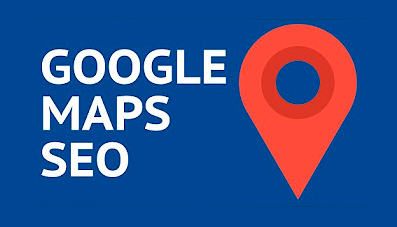
These days, “A successful website has gone from a ‘nice-to-have’ to an absolute necessity for almost all businesses,” counsels the UK’s National Federation of Self Employed & Small Businesses Limited.[2]
Your digital brand — and what others think about it — is in your customer’s pocket on a 24/7 basis.
Always-On Brands Mean the Future is Now
People just love their mobile devices. Your customers don’t leave the house without their smartphones. In fact, research[3] shows that one-third of Americans check their phones before brushing teeth in the morning.
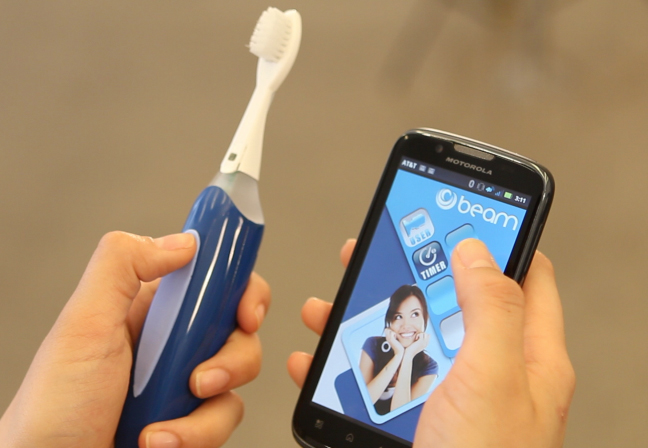
Image via GigaOm.com
Approximately three-quarters of mobile phone owners sleep with — or next to — their mobile phones (71%).
- Younger Millennials (ages 18-24) are most likely to sleep with their smartphone on the bed (34%).
- In the morning, more than one-third reach for their mobile first thing (35%), before coffee (17%), or a partner (10%).
- A majority (89%) check their phone several times a day (89%), or constantly (36%).
- Nearly half (44%) of Americans say they couldn’t make it a day without their mobile device.
- About one in 10 (11%) respondents say they would last less than an hour. Of those, more than half (52%) check their smartphone at least every 5 to 10 minutes.
Brands Must Avoid Band-Aid Solutions if They Want to Build a Winning Digital Brand Identity
A band-aid solution is nothing more than a quick fix for a systemic problem that’s bound to re-emerge later. If your mobile communications strategy is lagging, there’s a good chance that your brand needs a refresh or a rebranding.
Best practice says that if you’re not reaching mobile customers, it’s time to start…yesterday. It’s no longer a question of which brands gain increased market share by attracting customers via the internet. It’s now a basic question of brand survival.
Writing in the Harvard Business Review, digital consultant and investor Barry Libert says, “Transforming an organization is difficult, and the research proves it. But it is still worth doing. Forrester’s assessment is that by 2020 every business will become either predator or prey. As a leader, you likely already know the basics of managing change, but a digital transformation goes deeper…”[4]
There’s little point for a small business to invest in online presence without taking a deeper dive into the life and the long-term health of your brand. Perhaps that’s where the expression “like brand new” comes from?
If you need to evaluate your brand’s weak points, areas in need of innovation and change and opportunities for growth then now is the time to use the Auditing Analysis Accelerator™ for your brand. It’s an online programme that takes you through, step-by-step, the process of giving your brand a health check. In fact the Auditing Analysis Accelerator™ is a critical brand evaluation process that’s an essential part of every brand owner’s or manager’s toolkit.
How to Know When a Brand Refresh is Required
Consumers and businesses alike are aware that brands age, just like everything does.
- Has your brand seen a drop in sales?
- Is your brand losing market share?
- Has competition for your brand heated up?
- Does your brand message lack oomph?
- Is your brand logo and supporting brand collateral outdated?
- Does your brand still reflect your customers’ preferences?
- Have you got a great new service or product?
- Are you looking to expand your brand’s customer base?
- Has your brand had a merger or created a partnership?
At Persona Design, we share the top reasons why SMEs may need to refresh, revitalize their brand or a complete rebrand and how to achieve successful outcomes for both processes.
The good news is that you don’t necessarily need to start from scratch. But, let’s be perfectly clear about what a brand refresh is not. A brand refresh is not just a new colour for your logo, a tweaked tagline to accompany it and an updated website! A brand refresh is a strategic re-think that provides the key to a company’s long-term survival and market leadership.
The bad news is that procrastination will only make the problem worse.
Why a Brand Audit is the Way Forward for SME Businesses
Large corporate brands are constantly refreshing coupled with developing and launching new services to market. We’ve all seen the parade of boxes on the grocer’s shelf declaring “new, improved.” Car manufacturers produce new models every season to sustain the ever hungry consumer appetite for ‘new’.
Interest builds as Pantone® unveils a new colour of the year to reflect the latest colour trends — also enabling colour aficionados to leverage colour psychology to the full to further increase sales.
As an SME / SMB or smaller business, the timing for a brand refresh is actually a larger undertaking because it isn’t such a frequent occurrence. The first question is: Do you need a refresh or a rebrand, and where to begin? The quick answer is: Don’t guess.
Rebranding strategy is a complex process that allows no wiggle room for getting it wrong. Happily, a brand audit provides a tried and tested tool to nicely remove the urge for any guesswork.
Fine-tune your brand’s identity. A professional brand audit will identify weaknesses and shine a light on opportunities, identifying new areas to grow your brand and potential new customer audiences. These steps are critical before investing in a rebrand, refresh, new website presence or any other brand collateral for that matter.
If your brand message isn’t responsive and on point, there’s no point in an astonishingly beautiful mobile app or web site. If you’re struggling with your brand message to make it standout and be trusted, loved and referred by your preferred customer then the Personality Profile Performer™ is the online brand building programme you need right now.
What a Branding Agency Can Do For Small Brands
It’s enlightening to study big budget, big brand name examples of successful updates that have harnessed the power of the internet. Great case studies emerge:
- The swagger of Old Spice on YouTube (53 million views)
- The cultivation of Harley-Davidson fans
- The story about rebirth of heritage brands like Converse
However, SME brands can achieve big successes with rebranding to include digital presence. Here are several examples:
- A restaurant called Mama’s Pancakes serving only breakfast has added lunch and dinner. A rebrand draws attention to the new hours, midday and dinner menus coupled with a proactive digital brand strategy developed for Instagram and Facebook.
- An accountant’s firm named A Hand for Small Business who focused on business accounting has added individual tax return preparation. A rebrand ensures that her brand speaks to both types of customers. Her digital strategy ensures expert posts on LinkedIn support her repositioning brand strategy, raise her profile and highlight her specialist services.
- A primary school that expands its class offerings, age groups, or single sex status must rebrand and develop a strategy to reach parents of infants and toddlers. Facebook for Business is one way to target custom audiences by demographics and geography.
- A barbershop called Billy’s Beard changes its focus from men’s grooming to a unisex salon needs to rebrand both in-store and online. The owners embrace a presence on Pinterest and Instagram to supplement their mobile responsive website.
- A long-term serviced apartment complex called Urban Homes that now markets to short stays needs to rebrand to compete with hotels and private home rentals such as Airbnb. A completely revamped online presence is required.
Are you an SME / SMB business owner?
Think about these six questions to ask yourself about the state of your brand’s health:
- How can I identify new growth opportunities?
- Am I completely happy with my current market share?
- Is my brand promise resonating with my customer base?
- Does new business walk in every day? If so, do I know what prompts it?
- Am I completely happy with my brand packaging? My brand’s online presence?
- Do I have a 1-year, 3-year, and 5-year business plan in place?
[1] https://support.google.com/adsense/answer/6196932?hl=en
[2] http://www.fsb.org.uk/first-voice/fifty-great-tips-to-building-a-winning-website
[3] http://newsroom.bankofamerica.com/files/doc_library/additional/2015_BAC_Trends_in_Consumer_Mobility_Report.pdf
[4] https://hbr.org/2016/07/7-questions-to-ask-before-your-next-digital-transformation
Brand Innovation – How to Identify New Growth Opportunities
/0 Comments/in Brand Audit, Brand Auditing, Brand Audits, Brand Health Check, Brand Innovation, Innovation /by Lorraine CarterEvery day, your brand has opportunities to positively or negatively impact both current and potential customers. Ultimately, high-quality brand interactions are the difference between people who make purchases and those who take their patronage elsewhere. Brand innovation is a key factor in harnessing customer attention, purchase and ongoing loyalty to ensure growth.
The positive and memorable impact your brand makes on existing or potential customers is critical, because statistics indicate two thirds of people feel conflicted and need to be reassured on multiple occasions and through numerous touch-points before they trust a brand and make a purchase. [1]
In past decades brands were able to generate consumer confidence directly with mass communication strategies such as TV advertising. Now that essential trust factor needs to be developed, nurtured and reinforced through multiple direct and indirect communication routes such as fans, friends, direct marketing and social interaction online. It’s more important than ever for your brand to innovate and leverage new lucrative opportunities that make it, not only highly visible, but known, liked and trusted by your primary audience.
If you’re struggling to make your brand standout and be trusted, liked and referred by your ideal customer then the Personality Profile Performer™ is the online brand building programme you need right now.
Factors That Indicate You’re Missing Lucrative New Growth Opportunities
There are many factors that may indicate your brand is missing lucrative opportunities, and subsequently losing momentum [2]:
- Loss of Profits or Declining Sales: This is one of the most obvious signs that you’re not identifying and capitalizing on new development opportunities, and are losing momentum. You may not realize how severe the problem is until you look at how each quarter stacks up compared to previous years, and the numbers reveal how sales have plummeted. Earlier this year, Dunkin’ Donuts experienced falling profits, and analysts proposed one of the reasons was due to large burger chains, such as Burger King, offering unbeatable breakfast deals to lure loyal Dunkin’ Donuts customers elsewhere.
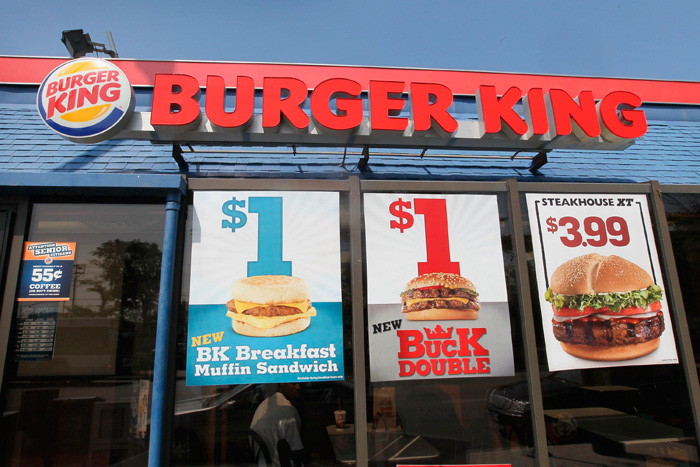
Image via businessinsider.com
- Poor Customer Feedback: Are you systematically tracking customer feedback? Maybe you’ve asked for customer feedback through surveys and aren’t happy with the responses you’ve received. Perhaps client feedback has been benign — your brand’s simply not doing enough for them, which has motivated previously loyal customers look elsewhere. JetBlue, an American low-cost airline, hired a team of over two-dozen people to handle social media with the primary objective of responding fast to customer feedback across social media — the target being a response within 10 minutes. That’s one example of a brand that’s implemented a proactive brand strategy to mitigate and limit poor customer feedback by handling problems quickly and efficiently.

Image via jetblue.com
- You’re Not Consistently Looking for New Customers or Growth Opportunities: If you’re not actively seeking out new customers or ways to grow, you’ll almost certainly miss new openings right in front of you.
- A Decline in Social Media Traffic/Less Engagement With Your Posts: In addition to keeping an eye on overall social media traffic levels, you should also be concerned if there is less engagement with posts or poorer conversions, depending on your overall brand strategy.
- Your Social Strategies Don’t Ultimately Convert Into Sales: Perhaps your marketing team has spent months developing a social strategy with the objective of translating heightened activity into increased sales. If you have one or more campaigns falling short, that’s a strong indicator that your brand is losing momentum and not on top of changing trends. In an effort to combat the negative press generated by the documentary film Blackfish, the SeaWorld brand of amusement parks spent millions to rehabilitate its image, including running an “Ask SeaWorld” campaign where social media users could pose questions to park representatives. Reportedly these efforts didn’t achieve the desired objectives — to stop the brand’s declining attendance numbers. However, the effects of the film could have been even more severe if the park chose not to respond at all.

Image via seaworldcares.com
- Your Products or Services Don’t Perform as Expected in the Marketplace: When new products don’t have the impact you’d hoped for, or older products that had performed well over time no longer compete as well in the marketplace, its probably time to audit your offering thoroughly. A brand audit is effectively a health check of your brand to evaluate areas of weakness and strength. It’s also used to identify new innovation opportunities too.
If you need to evaluate your brand’s vulnerabilities, weak points and areas in need of innovation and change then now is the time to use the Auditing Analysis Accelerator™. It’s an online programme that walks you through, step-by-step, the process of giving your brand a health check. In fact the Auditing Analysis Accelerator™ is a critical brand management tool essential in every brand owner’s arsenal.
Brand Strategies for Growth
Having considered some of the under performance indicators, corrective action is urgently needed:
• Solicit Customer Feedback in Conventional and Non-Conventional Ways:
We’ve already talked about how customer comments could reveal your brand isn’t doing as well as it should in the marketplace because it’s not adequately meeting customer needs. Such feedback could also be useful in shining a light on areas for innovation. In order to be maximally effective, consider methods of getting feedback that are often overlooked.[3]
For example, if you use cancellation tickets or opt-out methods, follow up with customers and find out why they decided to leave. Also, if your brand has an app, have a section where customers can go to give insight on how the company is doing in meeting their needs.
• Ask Employees for Their Views of the Company:
Employees are often your brand’s best brand ambassadors. Take time to understand how they feel about your brand and your company, and find out how you could improve. It’s also useful to ask employees if their friends have expressed opinions about your company, service or product, and if so, what they are. One of your primary objectives should be to ensure you have all your team onboard, behind your brand and motivated because every member of your team can make an important contribution to help it grow. Internal and external alignment is a critical part of your brand success.
• Take a Look at What Competitors Are Doing Well:
It’s also useful to examine the habits and trends of competitors in your sector and evaluate how they’re succeeding. This is a reference but should not become a source for emulation. You need to be different and distinctive which means you have to forge your own path.
You can acquire valuable insights by observing how successful competitors or high performing brands behave online. Sector relevance does have some bearing though when evaluating their strategies.[4] What do they do to find out what customers are thinking and feeling, and how do they capitalize on those opportunities?
• Seek Out Underserved Sectors or Customers:
There’s usually a lot of focus on the top performers in the market, but it’s worthwhile to take a dramatically different approach and view the market from the bottom up. By doing that, you may discover what’s sometimes called a disruptive opportunity. [5] You might decide to offer a product or service that’s more affordable to the bottom part of the market, thereby making it more accessible to everyone.
• Study Societal Trends:
By becoming more aware of trends throughout society, you’ll learn more about the amount of disposable income people have, what they tend to buy, and why. That insight could help you discover where your brand could pivot into an alternative market, reposition, rebrand and dominate. A key question to consider, have you thoroughly mapped out your different customer profiles or buyer personas? You can’t truly meet your customers’ needs if you don’t know their needs, wants, loves, hates and aspirations. Purchaser Personas or Buyer Personas are a critical brand development tool and a core part of the Personality Profile Performer™ online brand building course.

Image via Pixabay
• Highlight Seasonal Opportunities:
Starbucks’ Pumpkin Spice Latte is a perfect example of a product that highlighted a seasonal opportunity.
Furthermore, the product encouraged countless other companies to come up with pumpkin products of their own. You may even want to release products that make it easier for people to keep New Year’s resolutions. [6]
A couple of years ago, the Walgreen’s drug store chain did that by creating a special landing page to highlight six of the most common health-related New Year’s resolutions. Then, they offered associated products to help shoppers get off to a good start with their New Years goals.
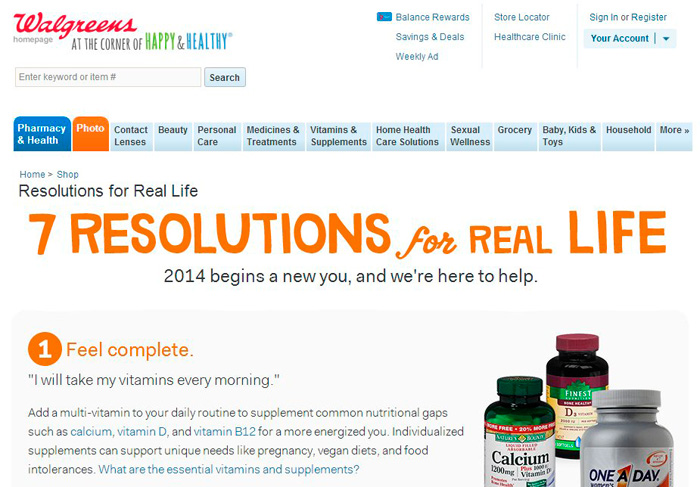
Image via Rohit Bhargava
Branding Building Opportunities to Consider and What to Keep in Mind While Doing So
Here we’ll look at ways you can build your brand after you’ve identified your areas of weakness using a brand audit health check so you can harness and convert potential misses into winning opportunities. Here are some tips to keep in mind as you proceed [7]:
Offer Promotional Giveaways:
Freebies may help you enter a new market by giving potential customers a taste of your brand through your product or service so they can experience how good it really is. When deciding what to give complimentary or offer a limited time use, focus on products or services that are the best representations or experiences of your brand.
The Republic of Tea, a specialty beverage company, does that well by including free samples of its tea within catalogues, and also packaged with every order a customer places. This approach is a great way to get people acquainted with the taste and quality of this upscale tea and its comprehensive range, thereby helping customers discover that this is a brand worth the indulgence.

Image via therepublicoftea.com
The brand also regularly offers limited-time-only products, including teas based on series of popular books. Free samples arguably encourage people to try teas they might not taste otherwise.

Image via therepublicoftea.com
Position Your Company as an Expert on a Subject:
What can your company explain better than any other, or what need does your product fill? Once you can answer those questions, you’re in a good place to generate content that showcases your company as one worth listening to, but make sure such content is intriguing and creative.
E-mail Customers After Receipt:
Once customers receive your products, e-mail them to ask whether there are things your brand could have done better. To encourage participation, give customers something in exchange such as a discount off a future purchase.
Three Brand Innovation Case Studies
Let’s look at three case studies of companies that harnessed new opportunities in the marketplace and capitalized on them to grow their brands:
1. Toyota/VH1 Save The Music:
Marketing analysts suggest that marketing at music festivals is of growing importance, especially when reaching Millennials. [8] These two well-known brands teamed up in celebration of Lollapalooza, a huge music festival.
They invited people to answer the question “What Does Music Mean to You” on globed ornaments, and broadcast the results on social media. To tie in with this campaign, both companies will present $30,000 worth of music equipment to three Chicago-area schools. This campaign harnessed a missed opportunity because it boosted brand visibility, highlighted CSR [9], and used the power of social media through a special hash tag.
2. Club Mexicana:
This is a London-based SME / SMB vegan Mexican pop-up restaurant [10] that has found success with recipes that both vegans and meat eaters love. The goal is to not only to cater to a growing number of people on a vegan diet, but defy misconceptions that vegan food is bland and not meant for a broader audience. Club Mexicana entered the marketplace at an opportune time, when vegan preferences were becoming more popular.

Image via clubmexicana.com
3. MVMT:
24-year-old college dropouts started a massively popular watch brand by offering cool timepieces at reasonable prices. They adopted a direct-to-consumer model, used crowd-funding and financial contributions from friends and relatives to kick-start the company, and recruited professionals to handle things they couldn’t do independently. This three-pronged plan helped them conquer the Millennial market. [12]
As you can see, once you’ve identified signs that indicate your brand is losing momentum in the marketplace, there are multiple ways to get it back on track — a brand audit is definitely required to ensure you achieve the best results. Pay attention to what customers are saying, and evaluate how you can better meet their needs, thereby finding lucrative opportunities you may have previously missed.
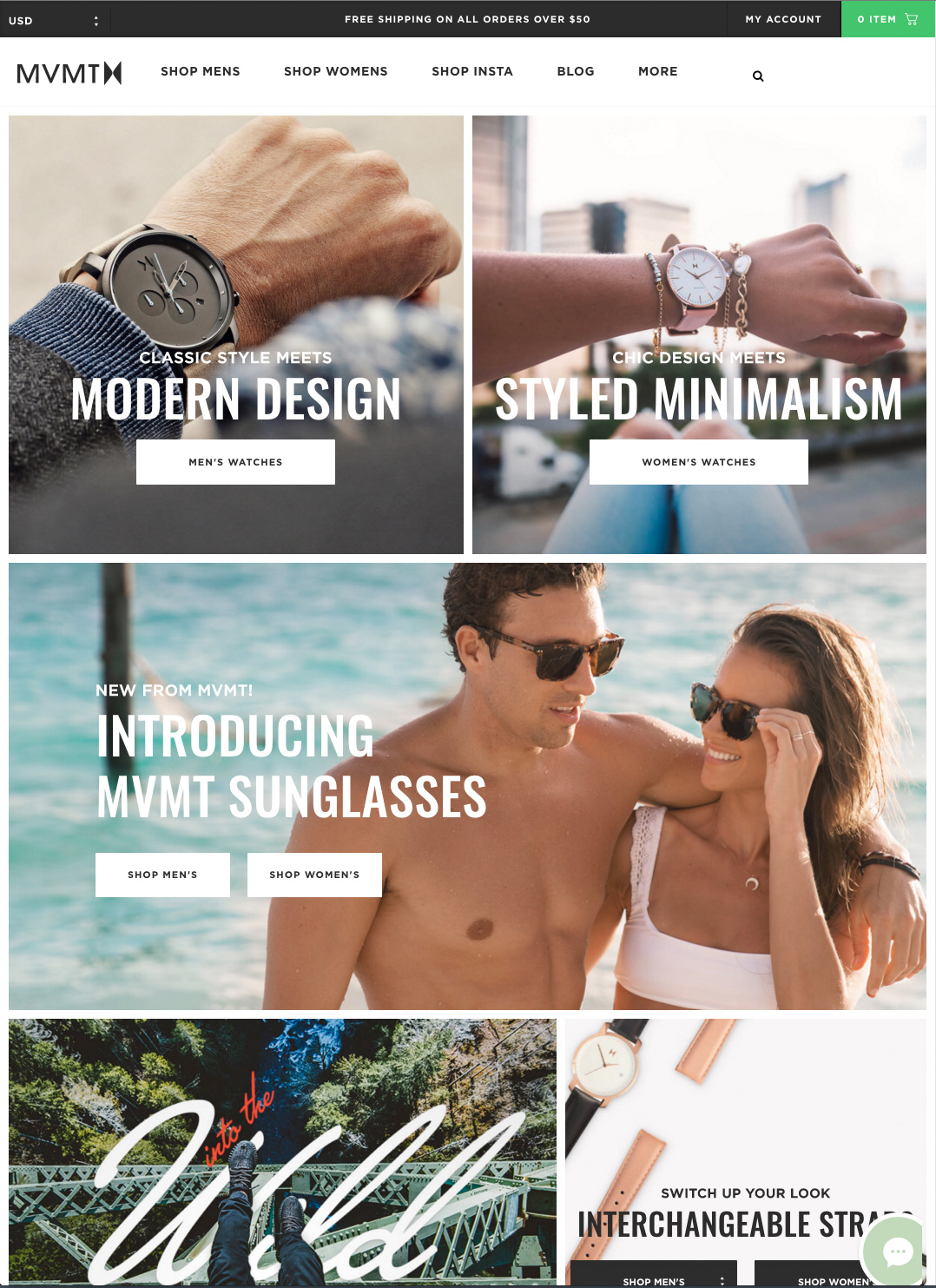
Image via mvmtwatches.com
Key Takeaways:
- Numerous signs indicate lost momentum, from faltering profits to poorly performing products or services
- Seasonal opportunities, employee insight, customer feedback and societal trends are some things that can help you identify missing opportunities
- Follow up with customers to learn what you could have done better
- Lucrative opportunities are often found when companies proactively respond to signals from their customers and engage with them regularly
Questions to Consider:
- Have you identified signs that your brand has lost momentum? Would a brand audit be in order?
- How might you reach out to employees to get their thoughts on your brand? Have you considered brand induction and training to make them into powerful brand ambassadors?
- In what ways could you capitalize on seasons, events or holidays to harness new opportunities?
- Have you considered giving your customers product samples, discounted access, bundled packages or freebies so they can sample or experience your brand first hand to understand or appreciate its’ superb merits?
- Have you investigated ways you could tie Corporate Social Responsibility brand strategies into a new growth opportunity, as Toyota and VH1 did?
[1] Michelle Hutton, http://www.edelman.com, “I Talk About Your Brand Because I Like My Friends,” September 2015.
[2] Kimanzi Constable, http://www.entrepreneur.com, “5 Signs That You’ve Lost Momentum in Your Business,” March 2016.
[3] Heather McCloskey, community.uservoice.com, “5 Overlooked Customer Feedback Opportunities That Are Product Insight Goldmines.”
[4] Jim Belosic, http://www.socialmediaexaminer.com. “10 Big Brand Facebook Tactics Any Business Can Use,” March 2014.
[5] Ronell Smith, http://www.moz.com, “How to Find Your Brand’s Disruptive Opportunity,” February 2016.
[6] Rodolfo Rinaldi Rincon and Hannah Lamb, http://www.thinkwithgoogle.com, “How Brands Can Seize Opportunities Around New Year Resolutions, ” December 2015.
[7] Amanda Stillwagon, http://www.smallbiztrends.com, “9 Ways You May Be Missing Opportunities To Build Your Brand,” May 2016.
[8] Jeff Fromm, http://www.millennialmarketing.com, “Marketing at Music Festivals: Playing to the Millennial Crowd, ” January 2014.
[9] Jordan Simon, http://www.vibe.com. “Toyota and VH1 Save the Music Partner Up for Lollapalooza and Chicago School Grants,” July 2016.
[10] http://www.clubmexicana.com/
[11] Damien Clarkson, http://www.theguardian.com, “Businesses and Entrepreneurs Seize Opportunities in Rise of Veganism, November 2014.
[12] Aimee Millwood, http://www.entrepreneur.com, “These 2 Young Entrepreneurs Seized the Time — and Success,” March 2016.
Brand Crisis – How to Manage, Survive and Thrive
/0 Comments/in Brand Audit, Brand Auditing, Brand Audits, Brand Crisis, Brand Failures, Brand Health Check, Brand Relaunch, Brand Reputation, Brand Revitalisation, Brand Risk Management, Brand Risk Mitigation, Brand Strategy, Brand Values, Branding, Customer Engagement, Entrepreneur, Rebranding, Situation Analysis /by Lorraine CarterThe one thing every brand product or service can count on is that there is a brand crisis in your future. No brand is immune. And, because bad news travels fast (faster than ever, due to social media), time is of the essence.
When do you have a brand crisis on your hands? Whenever there are “unexpected events that threaten a brand’s perceived ability to deliver expected benefits, thereby weakening brand equity.” [1]
It’s a Brand Crisis: First Things First
Step 1: Damage Control
Whether Mother Nature or manmade forces are at work, it’s critical that no matter how robust a brand you have built, you do have a “just-in-case” plan on the Public Relations shelf. A crisis management professional will guide you on the immediate essential steps and basic principles[2] of crisis management, and importantly, on your specific scenario.
From the very first moment that a sudden event, a mistake, or a piece of news impacts a brand negatively, savvy brand managers need to know:
- what to do first
- what never to say to the media
- how to prioritize
- what social media tactics are best
Step 2: Assessing the Brand Damage
According to the Financial Times, “When a brand crisis breaks out, consumers and other stakeholders (e.g., shareholders, the media, regulators) are likely to raise questions about the affected brand and why the crisis happened such as: who is to blame? Is the event likely to happen again? Is it true? What does the crisis signal about the brand?”[3]
When the frenzy begins to abate, your brand requires large amounts of tender loving care. The central question to be answered relates to the prognosis and timing for recovery. That is, brand owners and managers need to analyze both the short-term and long-term effects of the damage caused by the crisis for complete, cool-headed consideration.
Step 3: Short-Term Brand Damage
Assuming no loss of life or property, your short-term considerations are typically:
- sales
- consumer confidence
- an attack mounted by opportunist challenger brand(s).
Therefore, the task is to recover revenue, earn consumers’ trust, and deal with competitors in the right way.
A silver lining comes from gaining positive lessons learned from a negative experience…it’s never more important than when one’s “dirty laundry” has been on display for all to observe.
Nevertheless, a brand audit followed by a refresh or re-branding may very well be in order at this critical moment.
After the Brand Crisis: Getting Back to Normal
Step 4: Long-Term Brand Damage
A crisis is a harsh teacher and requires cool heads to respond rationally to an irrational situation. Ultimately, every crisis has a resolution.
How a brand deals with a crisis during the short-term damage control step will have a lasting effect on its reputation in the long-term, where it matters most. Indeed, that behaviour becomes a benchmark for the brand as conversations in the public sphere revolve around the brand’s handling of the event.
Because every situation is different, it’s impossible to say how long after the initial crisis occurs that step 4 will begin. It could be days, weeks, or months. Experts agree, “The scale and duration of this impact depends on a number of factors, including a brand’s track record and established consumer goodwill, as well as how quickly brand custodians respond to the crisis.” [4]
If you need to evaluate your brand’s vulnerabilities, weak points and areas in need of change then now is the time to use the Auditing Analysis Accelerator™. It’s an online programme that walks you through, step-by-step, the process of giving your brand an audit. A critical management tool in every brand owners arsenal.
Step 5: The Problem Gets Fixed
In a widely shared 2005 op-ed published by the Wall Street Journal[5] following the devastating Hurricane Katrina, the former chairman of General Electric presented his thought leadership memo about the five stages of a crisis. According to Jack Welch, the fifth and final stage in crisis management is when the problem gets fixed.
A benefit derived from a crisis is that it lets us know where things are broken and can help us to identify solutions so that future similar crises may be avoided. But this benefit applies only if we take the appropriate steps to learn those lessons and to apply that wisdom to our brand.

It’s mandatory to undertake the post-crisis approach strategically. In the words of Jawaharlal Nehru, statesman of India, “Every little thing counts in a crisis.”
What Now For My Brand?
As a branding expert, Persona Design can provide insights and advice about getting your brand back to ship-shape by determining:
- Whether the original brand strategy needs adjustment
- How to create a new brand promise
- To what extent the brand can recover
- Whether a brand refresh is appropriate
- Does the brand need repositioning?
- Whether a re-branding is required
- What a re-branding should look like
This process begins with a detailed brand audit focused on recovery. This procedure determines your brand’s market position versus competitors, identifies where brand strengths and weaknesses lie, reveals inconsistencies and opportunities for improvement, and flags new developments.
Option 1: A Brand Refresh
In the wake of a crisis, a refreshed brand must create and clearly communicate new company values.
Option 2: A Re-branding
A brand audit will determine whether the brand can survive. Some brands, including large ones like Arthur Andersen (now Accenture), cannot survive a deep crisis.
Calculated and deliberate brand re-building to repair brand reputation is not a frivolous process. It requires a serious and thoughtful strategy based on customer perception, behaviour and values.
Let’s look at five types of crises that commonly occur in a small-to-mid-sized company and use illustrations found within larger corporations. Note that the strength of a brand image will mitigate damage in crisis aftermath, with smaller brands being more vulnerable than these household names.
A Bump in the Road for Brands
1. Product Failures
As a small-to-medium retailer, you can be caught up in a failed product originating with one of your suppliers. It’s a costly headache for retail management having to refund customers’ money, give them replacements, deal with the supplier, while hoping the problem doesn’t get any worse or rub off on your own brand. When a product failure occurs, you may benefit from professional brand reputation management.
Example: Due to six fatal incidents, millions of unstable dresser units have been recalled by IKEA[6], which is responsible for their own supply chain as manufacturer and reseller. This product recall is one of 17 for IKEA in 2015 through mid-2016.[7]

IKEA Malm dressers (IKEA Corporate News website)
Result: Surveys indicates that the world’s largest furniture retailer’s reputation is hit hard, but the brand will survive, according to experts like Stephan Shakespeare, founder and CEO of YouGov, who writes in July 2016, “The good news is that IKEA’s overall Value Score remains relatively untroubled – in the UK at least. While this remains the case, IKEA can be assured its offering will continue to be popular…IKEA should be thankful that it has such a strong brand image, and indeed one that people around the world have a connection and loyalty to.”[8]
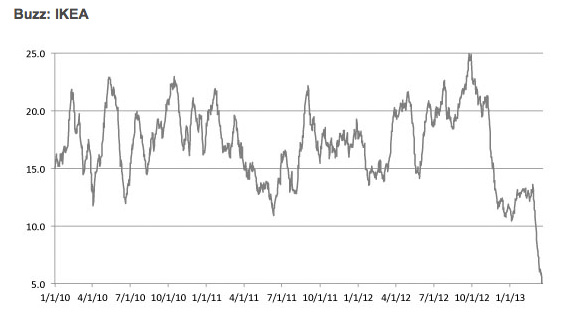
Image via Buzz Score (YouGov)
2. Brand Embarrassment
Keep your clearly defined brand values front and centre in the mind of the customer. If something embarrassing does occur, seek advice from a professional branding agency to prevent customers from expressing dismay with their feet and their wallets.
“People buy a brand because it says something about who they are and what they believe in,” according to Deborah MacInnis, PhD, a professor of marketing at the University of Southern California Marshall School of Business. “If there’s a brand that does something bad, people feel betrayed but also feel that wearing it would signal that they agree with the values of the company.”[9]
Example: High priced teen apparel brand Abercrombie & Fitch lost its status as darling of the Millennials when the CEO made disparaging comments about customers who didn’t fit the store’s skinny sizing. An employee with an eating disorder gained 68,000 petition signatures and an apology.
Result: Sales have been impacted to the degree that store closings are the only option. The brand continues to close sizeable chunks of its portfolio of (previously) 946 U.S. store locations.
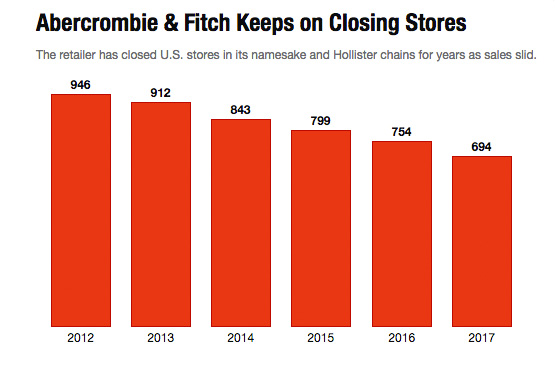
Image via Fortune, source Abercrombie & Fitch filings
3. High Profile Dishonesty
Just one untruthful comment by one top executive can negatively affect a brand. This can be particularly disruptive for service brands where the emphasis is on people. A renewed brand promise will help get things back on track.
A Canadian-based digital strategy specialist writes, “Brands aren’t heartless, mindless, soulless, brick and mortar stores. They are built by people. And no customer wants to associate with brands that comprise of unscrupulous, unreliable people. Honesty is always number one on buyers’ desirability index.”[10]
Example: After a 22-year career, NBC’s former national news anchor, Brian Williams, lost his job after exaggerating a report about his experience on the front lines in Iraq.
Result: With a quick response from NBC, a Williams apology, and a seven-month suspension for its news anchor, the network weathered the storm around trustworthiness. The popular news announcer who had enjoyed a 10-year, $15 million/year contract was brought back on air, albeit with a demotion to the network’s related cable brand, MSNBC.[11]
4. Broken Brand Promises
In the consumer’s mind, Whole Food stands for healthy eating, responsibly grown, and high quality standards, so that shoppers can buy with confidence around issues they care about.[12] A series of giant consumer let downs have occurred. Whole Foods Market, Inc. is big enough to fund their own newly hired full-time professional global VP to handle post-crisis brand strategy.[13]
Example: Whole Foods dropped the ball on their own brand promise. Last year, Whole Foods was found guilty of price mischarging from California to New York. In another salvo at Whole Foods in June 2016, the U.S. Food & Drug Administration issued a series of safety standard warnings[14] regarding fundamental cleanliness standards.
Result: Consumers were unimpressed when Whole Foods responded with a video from the company’s CEOs. People reportedly found the performance insincere, punctuated with the kind of overt gesticulation that students of body language are trained to spot. No discount was offered to entice customers back. Share prices for Whole Foods Market, Inc. have depreciated 25 percent in 12 months[15] and they’re pivoting to an ancillary brand, a smaller store with less selection, called 365, aimed at Millennials.[16]
What happened to “The Customer is Always Right”? Harry Gordon Selfridge may have overdone customer service with that mantra back in 1909. However, when a business’s explanation is open to interpretation as “we’re sorry we got caught,” you can be sure that savvy consumers aren’t buying it.
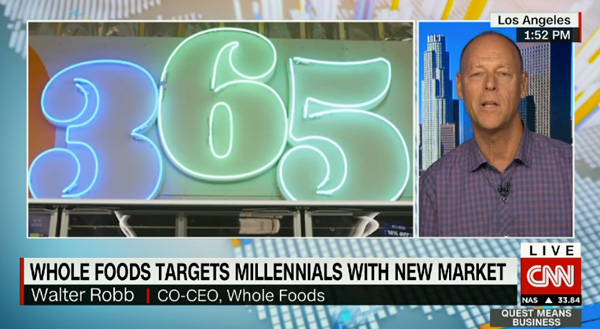
Image via YouTube
5. Scandals
When internal and external brand values are out of alignment and don’t match, the result can be devastating. FIFA, Volkswagen, Sports Direct, Chipotle, Bill Cosby, Ryan Lochte. And now Wells Fargo, one of the world’s largest banks (with a comfy Old West stagecoach brand image) was fined $185 million and released 5,300 when a fabricated bank account scandal broke.
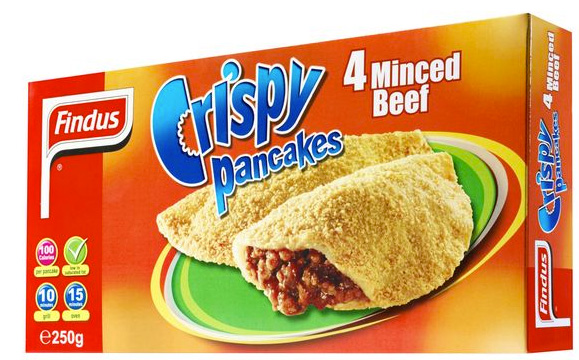
Image via Mirror UK
Example: For Findus, 50 years in the UK grocer’s frozen food aisles, it was one scandal too many. Following the uproar of 2013, when the beef lasagne was found to contain 60 to 100 percent horse meat, the product was pulled and the brand was sold. Time did not heal, as it became known that the brand had been served in 2,300 schools, hospitals, prisons, armed forces and senior housing,
Result: From spring 2017, the Findus brand is no more.[17]
Are you struggling with how to reposition your brand, rebuild your brand values, improve your brand promise — make your brand standout for the right reasons so it’s memorable and distinctive in ways that make it much loved? Then the Personality Profile Performer™ online programme is a perfect fit for you. Enroll today and make your brand highly visible and loved.
Questions to ask while reinforcing or rebuilding your brand:
• How strong is your brand reputation?
• What problem does your brand solve for its customers?
• Are your brand values clearly defined and communicated?
• How does your brand deliver on its promise?
• How do your employees, partners, vendors, suppliers and owners view your brand?
• When was the last time you conducted a brand audit?
[1] http://blog.ebiquity.com/2015/07/why-it-pays-to-take-the-drama-out-of-a-crisis
[2] Bendel, Peggy. “It’s a Crisis! Now What?” SutherlandHousePublishing.com, 2012.
[3] http://lexicon.ft.com/Term?term=brand-crisis
[4] http://blog.ebiquity.com/2015/07/why-it-pays-to-take-the-drama-out-of-a-crisis
[5] http://www.wsj.com/articles/SB112666533279540108
[6] http://www.ikea.com/us/en/about_ikea/newsitem/062816-recall-chest-and-dressers
[7] http://www.ikea.com/us/en/about_ikea/newsroom/product_recalls
[8] https://yougov.co.uk/news/2016/07/06/ikeas-drawer-debacle-wont-destroy-uk-image/
[9] https://mic.com/articles/130147/researchers-are-now-able-to-measure-just-how-embarrassing-an-uncool-brand-is#.T70A15Xkv
[10] http://www.business2community.com/branding/4-reasons-dishonesty-can-kill-brand-faster-bad-strategy-01084600#5XME1zbb2yep2m34.97
[11] https://www.washingtonpost.com/lifestyle/style/at-long-last-brian-williams-is-back–humbled-and-demoted-to-low-rated-msnbc/2015/09/21/ea423408-6077-11e5-b38e-06883aacba64_story.html
[12] http://www.wholefoodsmarket.com/mission-values
[13] http://www.vanityfair.com/news/2016/09/brooke-buchanan-theranos-whole-foods
[14] http://www.fda.gov/ICECI/EnforcementActions/WarningLetters/2016/ucm506089.htm
[15] http://www.investopedia.com/articles/markets/062016/what-whole-foods-latest-woes-mean-stock-wfm.asp
[16] http://money.cnn.com/2016/07/27/investing/whole-foods-earnings-july
[17] http://metro.co.uk/2016/01/31/goodbye-findus-crispy-pancakes-brand-dogged-by-horsemeat-scandal-is-to-disappear-5654449/
Rebrand or Refresh? That is the Question
/0 Comments/in Brand Audit, Brand Auditing, Brand Audits, Brand Culture, Brand Differentiation, Brand Personality, Brand Profiling & Positioning, Brand Revitalisation, Branding, Professional Services, Rebrand, Rebranding, Revamped Design, Revitalized Design, Uncategorized /by Lorraine CarterA Rebranding Strategy Guide for Brand Owners and Managers
The business world is in a constant state of flux. Markets change, new trends emerge, disruptive competitors alter longstanding rules, and customer preferences evolve — all of which impacts your brand. Consequently brands are constantly evolving to ensure future growth and relevance. Even the longest standing and greatest brands in the world need rejuvenation, if not a total rebrand, in order to maintain their market leadership.
Like the foundation upon which a house is built, a strong brand is essential, indeed it is the lifeblood for any successful organisation. When cracks appear in that foundation, a wise owner or manager must take action to repair, introduce procedures to prevent deterioration and take steps to strengthen the brand for future growth. Experts say that organisations and brands change their corporate identities on an average of once every 7-10 years. [1]
On a regular basis, diligent brand owners and managers need to take a step away from an organization’s day-to-day operations to examine and re-evaluate their position and strength in the market. If your brand isn’t achieving its objectives or driving business growth, there’s little time to be lost wondering what to do about it. Its time to give your brand a health check. Frequently asked questions about the two brand revitalisation routes include:
- What’s the difference between a brand refresh and a rebrand?
- How do I determine which one is the most suitable choice?
Rebranding or revitalization can take many guises from the complete wholesale change of a company, service or product, inside and out, including; name, culture, values, vision, mission, proposition, positioning, purpose, behaviours, tone, visual collateral and all that entails with no connections to the legacy entity. Alternatively, it can be something less dramatic and of a more subtle, evolutionary nature in the form of a brand refresh.
In each instance though, the change to whatever degree, be it a total rebrand overhaul or brand refresh, affects a change in the minds of the target audience in terms of their perceptions of the brand. That change is a process of giving an organisation, product or service a new meaning and image, both in terms of brand experience and culture to its visual brand collateral, in order to make it more successful.
In determining whether it’s time for a refresh or a rebrand, one of the most effective tools for re-assessing your brand’s state is a brand audit health check to examine external and internal drivers that impact your brand. Like any checkup, a brand audit is best done as a proactive and preventative measure. Aside from determining the health or state of your brand, a brand audit also helps determine the level of potential change required — to rebrand or refresh.
“A brand audit is effectively a health check of your brand to identify and address problem areas with a net result of helping you turn things around and grow your bottom line.
Brands are like living entities with life cycles. They start with much excitement and promise, grow and then eventually plateau. A brand audit helps you innovate, re-invent, re-invigorate, and ensure market leadership and continued relevance so you can maximise your commercial return and fend off your competition.
The scale and depth of a brand audit is largely determined by your primary objectives coupled with timelines and resources.”
What’s the Difference between Refresh and Rebrand?
The reasons for rebranding and or refreshing an organisation, product or service are numerous and decisions should not be taken lightly without sound strategic reasons before launching into the process.
Once you know why you’re considering either a rebrand or refresh and what your primary objectives are in making this strategic decision, consider the following differences:
Rebrand or Refresh? A Quick Reference Checklist
| Refresh | Rebrand |
| What: Expand reach and market impact, get new customers, attract new talent, increase profitability
Why: Declining market share, diminishing growth, changing client’s or customers needs, tired and dated with lack of brand relevance, insufficient new leads, significant new product/service launch, lack of brand distinction, entering a new market, aggressive new competitors, new technology changes, struggling to describe what makes your firm, organisation, product or service different, difficulty attracting new talent, competitors poaching key employees, need to take your organisation to the next level, change in brand architecture or hierarchy | What: A re-positioning to change market perceptions, re-evaluate who are we, why do we exist? What’s our mission, vision, values, promise? How do we define and articulate our brand proposition and purpose? How is our brand really different to our competitors?
Why: New ownership, merger or acquisition, legal issues, reputation damage, rationalisation, outgrowth, globalisation, new primary target audience(s), competition, new sectorial challengers and disruptors |
| What: Evolutionary logo update
Why: Better reflection of brand platform and values | What: New brand identity
Why: To streamline and simplify or a complete change in core business |
| What: Evolve, update tagline
Why: Tweak the message, spotlight the business, stay current, introduce a new brand promise reflecting enhancements provided by the business | What: New tagline
Why: New line of business, new audience or an innovative advancement, new positioning |
| What: Health check your brand personality and primary characteristics using brand profiling — elements reference check
Why: Increased competition, slower sales, insufficient brand relevance and resonance, create enhanced distinction and market recognition, develop stronger brand resonance with customers | What: Redefine your new brand personality and brand characteristics
Why: Make it more relevant, engaging, compelling, distinctive, different, memorable and referable |
| What: Evaluate your brand promise and enhance consistent delivery
Why: Customer feedback, lack of strong distinction, difference and referability | What: Change your brand promise
Why: As a result of new products, services |
| What: Re-evaluate customer base versus profitability, evaluate brand equity
Why: Customer research, re-evaluate existing buyer personas (customer profiles) | What: New primary audience, need to change existing or previous customer perceptions
Why: Customer research, develop new customer buyer personas |
| What: Build new leadership and employee training modules
Why: People represent the brand and need the knowledge to be effective brand champions | What: Revamp leadership and employee training programmes
Why: To interpret and support company culture, develop new brand ambassadors |
| What: Expand market share
Why: Changes in competitive set and customer wants/needs | What: Find and capture new customers
Why: Change of price point and positioning |
| What: Introduce new products, services congruent with primary offering
Why: Business expansion within existing customer base and to attract new customers | What: Discontinue or retire some existing products, services
Why: Lack of market demand, no longer relevant, changing customer needs, competitors |
| What: Launch within a shorter timeline
Why: Competitive edge, attract change hungry customers, capture / maintain lead market share | What: Stage a rollout over a year or longer
Why: Extensive impact throughout the business, firm or organisation requiring change management internally and externally |
So, refresh or rebrand? Here we take a look at both options and evaluate the most significant or typical reasons for deciding to choose one over the other. We’ll also review several case studies and key learnings to be extracted.
Rebranding or Brand Refresh Process
Establishing the reasons behind any brand change is fundamental. Whether your brand audit points to a refresh or a rebrand, both routes require a process of due diligence to determine the changes required and to what degree. Both routes require an inclusive approach, from the C-suite to the newest team member, ensuring that everyone in the organisation sees themselves as an essential part of the brand.
Engagement with the external market, customers, stakeholders and influencers alike is also hugely important. There many examples of brands which failed to address this adequately and consequently suffered significantly at the hands of voluble detractors.
While it may be tempting to jump into the visual brand design aspects, the process of investigation, discovery, analysis and brand strategy development cannot be overlooked or rushed — at your brand peril.
Broadly speaking a typical rebrand or refresh process includes:
- Rebrand / refresh planning; timelines, resources, team
- Brand audit health check and research
- Brand profiling, architecture, differentiators and positioning documentation – update or overhaul
- Brand strategy development
- Brand design, messaging development and application
- Brand testing, research and refinement before implementation and rollout
- Brand induction and training throughout the organisation and external third parties
- Internal / external communications planning and rollout of rebrand or refresh
- Brand style guide development for protection and management of the brand
- Measure of impact and commercial return against previously determined key performance indicators
Are you struggling with how to make your brand highly visible, different, distinctive memorable and likeable? Take a look at the Personality Profile Performer™ Programme. It’s a step-by-step process to make your brand No.1 in your target market — especially if you’re a getting lost in the market amongst all your competitors.
Rebranding Strategy
Approaching a rebranding or brand refresh process without strategic planning, market insights and customer engagement can have disastrous consequences. The strategy leading to a brand refresh or to rebranding requires much more than changes to a logo; it requires an understanding of strategic objectives for the brand.
Research involves consultation with staff, with existing, lost and prospective customers, former clients, and competitor insights to get a full picture of current brand associations as well as customer perceptions, wants and needs.
Therefore, an investment in time for research and assessment is required to flesh out areas of strength and weakness and their impact on the brand to see whether a total rebrand or just a refresh is required. The brand audit will also typically reveal new opportunities and point the way towards what you need to do to leverage them for greatest impact.
Rebranding Deliverables
Define deliverables to the organisation. These typically include a brand positioning statement that summarises the pertinent research and brand profiling outputs regarding the unique selling points and key brand characteristics that set the brand apart and make it highly visible, different, distinctive, memorable and liked while also providing the roadmap or GPS direction for the brand moving forward.
Brand messaging is delivered to include some or all of the following: values, vision, promise and mission statement, brand story, value proposition (for aligning brand product and services to customer communications), identification of target audiences, development of purchaser personas and a key messages crafted for each. Deliverables might also include problem statements and problem solutions.
Lastly, the design aspect of visual and / or audio deliverables should be identified e.g. logo and a tagline, packaging, stationery, website, social media platforms, apps update or overhaul, brochures, uniforms, PowerPoint or Keynote templates, sales supports, vehicle livery, uniforms, signage, site interiors and exteriors, exhibition stands, possibly music, videos, and more. It’s critical that your new or revitalised brand collateral properly reflects your brand, is consistent throughout every touch point and most importantly reflects and amplifies your key brand differentiators and brand personality in a way that’s really meaningful to your primary audience.
Rebranding or Brand Refresh Rollout
To avoid miscommunications, a new or refreshed branding launch is staged first internally. An organisation must provide insights, education and training to everyone, top down from senior management to general employees to ensure they are onboard to advocate the new brand. Front line employees’ communications are essential to the successful external customer roll out which follows.
Top 15 Tips for Ensuring a Successful Rebrand or Refresh
- Consult management
- Conduct a brand audit
- Determine refresh or rebrand requirement
- Set objectives
- Establish a timeline
- Set budget appropriately
- Create a balanced project team internally and externally
- Evaluate all customer touchpoints
- Re-develop / overhaul brand proposition, positioning and differentiators
- Re-visit brand strategy; sales and marketing messages and channels
- Develop brand strategy, brand profiling documents to provide the essential brand directions or roadmap
- Develop brand design brief
- Commission brand design agency (with relevant expertise)
- Determine methodology and markers for measuring ROI
- Plan and execute brand rollout to market
Hit or Miss: Brand Refresh and Rebrand Examples
Taking the time and consulting the experts to get it right is critical; a miss can be a costly affair.
Accenture: Rebranding Involved the Entire Global Organization
Amid much fanfare, Andersen Consulting hung a huge banner at the New York Stock Exchange to announce its 2001 reorganization from partnership to public company and a rebranding as Accenture. Following arbitration involving accountancy Arthur Andersen, the new name (meaning accent on the future) resulted from an internal competition won by a Danish employee in the company’s Oslo office, chosen from 2,677 submissions from 42 countries.[2]

Image via Accenture
Time magazine pegged Accenture “as a generic corporate nonsense word only a management consultant could have come up with…“[3] Only this was not the case. Currently the world’s largest management consultancy, Accenture might have made more of the positive PR storytelling opportunity about the brainstorming naming contest and the winner’s inspiration.
Morgan, Lewis & Bockius LLP: A Leading Law Firm says Brand Audit and Teamwork Are Key to Rebrand Success
America’s largest law firm undertook a rebrand over a 15 month period. Morgan, Lewis & Bockius LLP had experienced two mergers, and the rebrand was intended to “define and raise awareness of our practice and industry expertise, commitment to client service, and seamless global reach.”
The brand audit health check process involved many thousands of pieces of content, including 2,000 lawyer biographies to be re-written, according to the firm’s chief business development and marketing officer. The takeaway? To “cultivate a really strong collaboration among all of the constituents responsible for launching a new brand…No single person could have accomplished this alone; this was truly a team effort.”[4]
Massey Bros.: One of Dublin’s Largest Funeral Directors Rebranded to Amplify its Brand Leadership Positioning and New Innovative Services
Massey Bros. Funeral Directors is a very successful family owned and managed business established in Dublin in the 1930s. They operate in a sector which is traditionally very conservative yet they’re industry leaders in terms of their premium service together with ongoing innovative solutions offered.
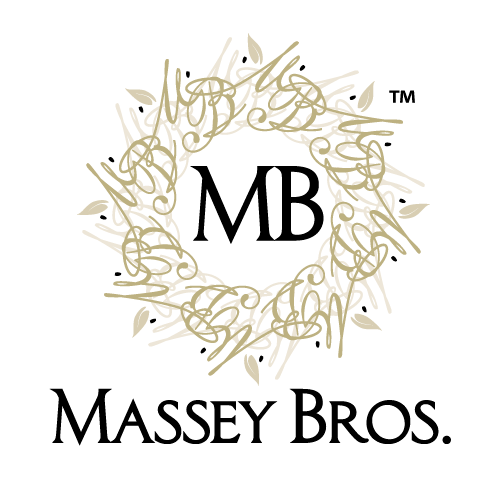
They also have the added complication of having more than six competitors also operating legitimately under the ‘Massey’ name. In addition to this they themselves also operated under two names before their brand refresh! Their brand revitalisation strategy helped them fully leverage their leadership positioning and amplify their multiple new innovative service solutions offered.
Dublin Tourism Board: Refreshes the Destination’s Strategic Positioning
Tourists have a finite number of vacation days and discretionary budget for holidays, so every destination competes to capture that spend. Visit Dublin undertook a study[5] to determine reasons for declining tourism numbers since 2007, resulting in a new positioning crafted to a visitor-focused strategy further analyzed by length of stay, reason for visit, country of origin and more demographics. As a 5-year plan, the realigned strategy, “A Breath of Fresh Air” gets buy-ins from the stakeholders and community to highlight both urban and outdoor visitor experiences.
Old Spice: Rebranded to Reposition – It Used to be on Your Grandfather’s Bathroom Shelf!
Marketing pros everywhere love the transformation of Old Spice[6] fragrance for men from an ageing brand to a sexy one. Aimed at a younger, newly targeted consumer audience, the “Smell Like a Man, Man” campaign (52 million views and counting) smells nothing like 1938, the classic brand’s year of birth.
Learn from these well-known rebranding and brand refresh failures, now text book case studies on approaches to avoid. The primary lesson in each of these examples is do your due diligence before rebranding or refreshing your brand!
Royal Mail:
Consignia was a £2 million investment launched in January 2001 for the U.K. postal service. Calling the new name, “Nine letters that spelled fiasco,”[7] the BBC joined others to prompt a U-turn to return to Royal Mail 16 months later.
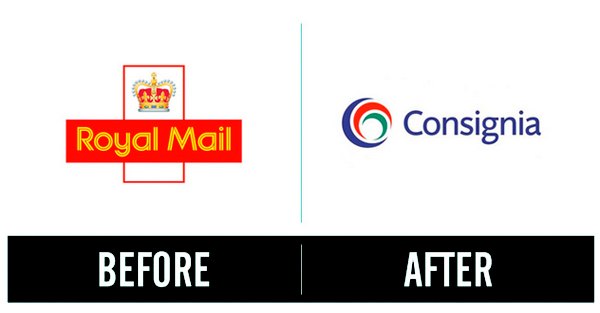
Image via Royalmail
Tropicana:
When parent company PepsiCo removed the leafy green logo and juicy orange pierced with a straw in favor of a one-dimensional glass of juice, Tropicana sales plummeted by 20 percent. On top of whatever the rebrand and reversal cost, sales suffered to the tune of $137 million between January 1st and February 22nd 2009.
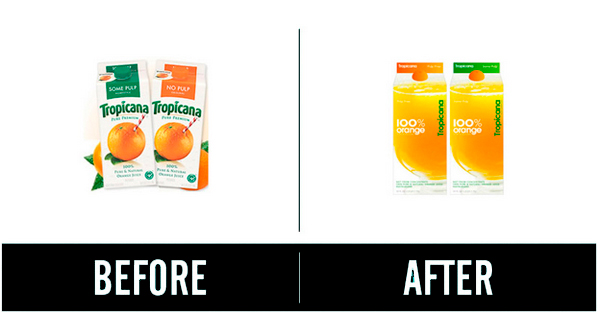
Image via Adage.com
Gap:
Perhaps the fastest rebrand turnaround ever, the new Gap logo lasted only six days at Christmas 2010. Consumer reaction was negative and outspoken. In going back to square one, the whole exercise has been estimated to have cost Gap $100 million.[8]
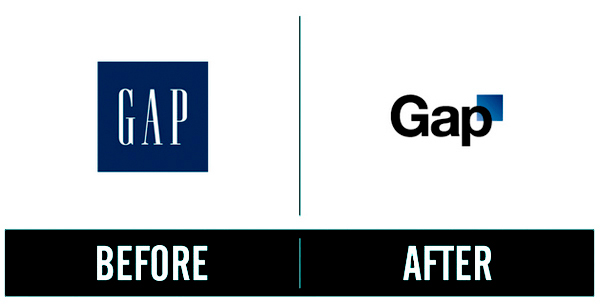
Image via Gap
RadioShack:
RadioShack, founded in 1921, once operated 8,000-plus retail locations around the world. In 2015, after 11 consecutive quarterly losses, RadioShack filed for bankruptcy. Instead of spending millions on a refresh as “The Shack”, the company needed to completely rebrand. Service in RadioShack was reportedly abysmal, selection regarded as limited, prices perceived to be high and the USP as an electronic supplier of parts was no longer considered relevant.
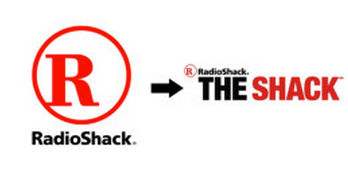
Image via RadioShack
Can we help you with your brand refresh or rebranding?
Ask yourself:
- Are you prepared to undertake a thorough assessment of your brand’s standing by giving your brand a thorough health check — a brand audit?
- Does your brand strategy plan reflect the time commitment involved in making a change?
- Has budget been allocated for a brand refresh or total rebrand?
- Have you identified strategic reasons for a brand refresh or rebranding?
- Is your brand still truly relevant to your target market now and into the future?
- Is your brand really distinctive, different and memorable from a customer/client perspective? Do you need to re-evaluate your brand profile?
- Are you considering a rebrand to solve a brand challenge and / or a commercial challenge?
- Have you really evaluated the impact of new disruptors and challengers entering your market and how your brand will compete against them?
You may also like:
- How Brand Purpose = Purchase = Increased Profitability
- Rebranding Strategy: Why Your Rebrand Must Embrace Storytelling
- Brand Flops: 5 Lessons Brand Managers Can Learn From Epic Brand Failures
- Brand Revitalisation and Relaunch: The do’s and don’ts of doing it successfully!
[1] VIM-Group.com
[2] https://newsroom.accenture.com/subjects/accenture-corporate/andersen-consulting-announces-new-name-accenture-effective-010101.htm
[3] http://content.time.com/time/specials/packages/article/0,28804,1914815_1914808_1914804,00.html
[4] http://www.infinitespada.com/news/what-it-takes-to-rebrand-americas-largest-law-firm
[5] http://www.failteireland.ie/FailteIreland/media/WebsiteStructure/Documents/4_Corporate_Documents/Strategy_Operations_Plans/Destination_Dublin_GDT_2020_Full_File.pdf?ext=.pdf
[6] http://www.personadesign.ie/blog/brand_resurgence_4_lessons_learned_from_amazing_brand_comebacks
[7] http://news.bbc.co.uk/2/hi/business/2002480.stm
[8] https://www.linkedin.com/pulse/million-dollar-branding-mistakes-from-pepsi-radio-shack-quinn?trkSplashRedir=true&forceNoSplash=true
How Brexit Presents Big Opportunities for Small Brands
/0 Comments/in Brand Audit, Brand Auditing, Brand Audits, Brand Differentiation, Brand Health Check, Brand Personality, Brand Positioning, Brand Relevance, Brand Strategy, Branding, Brexit Brands, Business /by Lorraine CarterBrand Flops: 5 Lessons Brand Managers Can Learn From Epic Brand Failures
/0 Comments/in Brand Ambassador, Brand Audit, Brand Auditing, Brand Champions, Brand Failures, Brand Relevance, Brand Reputation, Brand Research, Brand Risk Management, Brand Risk Mitigation, Brand Strategy /by Lorraine CarterSuccessful branding is not easy. That’s why Coca-Cola, Sony, Microsoft, Ford, Colgate-Palmolive, McDonald’s and more — a few of the world’s biggest brands — have been responsible for some giant-sized branding flops.
In 1957, the introduction of the Edsel by Ford Motor Company was such a big failure that the name “Edsel” has become synonymous with “huge marketing failure.” In fact, Microsoft founder Bill Gates has singled out this example as one of his favorite case studies in what not to do.[1]
In each of the following cases there are numerous reasons for each of these famous brands falling short. In quite few a thorough brand audit would have flagged up some of the risks before they became text book flops.
Let’s take a look at how Ford Motor Company, Coca-Cola, Apple, and other famous names have taught us that even the best brands can perform some of the biggest belly flops ever, providing us with a look at pitfalls to avoid and lessons to be learned.
Lesson #1: Brands Must Understand Customers Needs, Wants and Behaviours
Edsel
In 1955, in America’s motor city of Detroit, Ford’s gas-guzzling Edsel automobile was on the drawing boards. Meant to be the full-sized answer to fill every American suburban dream, they named the car posthumously after Henry Ford’s son.
However, by the time this full-sized automobile was launched in 1957, consumer preference had shifted toward compact cars — a shift that was cemented by a stock market dive. Positioned as the car of the future, Edsel was overpriced, over-hyped and entirely the wrong car at the wrong time. Production was ceased within two years in the costliest mistake American industry had ever known.

1958 Edsel – Henry Ford Museum, Credit: Michael Barera, Wikimedia Commons 2.5
Coca Cola
In the 1980s, nobody considered the branding of fast-moving consumer goods under the category of apparel, other than as corporate giveaways or inexpensive T-shirts and baseball caps. Yet, Coca-Cola agreed a merchandising deal to create an upmarket fashion line of Coca-Cola Clothing designed by a young, unknown Tommy Hilfiger.
First sold at an Upper West Side New York City store called Fizzazz, the in-store marketing revolved around a soda counter shopping experience, an interactive video screens, and hole-in-the-wall credit card machines called Eric that didn’t appeal to consumers.[2] Instead of print catalogues for its mail order distribution, Coca-Cola Clothing distributed free CDs bearing a message that tried hard to connect the soft drink and the clothing. It read: “Pop this cassette open for a sparkling, carbonated fashion video.”
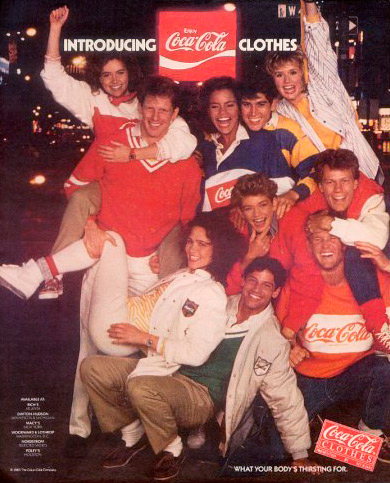
Coca Cola print ad from the 80s (Credit: 237, eBay Store)
The concept was ahead of its time, even for trendy Manhattan audiences; only five of the 650 planned stores ever opened. The Hong Kong-made clothing felt cheap to the touch, featured a poorly designed fit, and the whole thing fizzled out fast.
Apple
Apple, too, once had a momentous flop in 1993. In those days, business cards and a Filofax diary were the tools of networking and time management. Apple tried to change all that by introducing a bulky Apple Newton handheld PC device which debuted at the Computerworld convention.

Apple Newton (Credit: Ralf Pfeifer, Wikimedia Commons 3.0)
The world wasn’t ready and the product wasn’t right. Starting at $700, some said it was too expensive, others said too chunky, and everyone agreed it was very poor at reading the handwriting that people made using its stylus. Later versions of personal digital assistants (PDAs) by Apple competitors were enhanced, more broadly accepted by consumers, and sold far better.
Lesson #2: Brand Purpose Must Stay On Point
Brand extensions can be a tricky business. Colgate, Cosmopolitan magazine and Harley Davidson have clearly demonstrated what not to do. It’s difficult to imagine how some of these rather odd multi-million dollar spin-offs made it out of the boardroom, but they did.
Colgate
Colgate is a toothpaste; it promises pearly whites and fresh breath. Yet, in 1982, the toothpaste brand launched Colgate Kitchen Entrées, looking to capture the market in frozen ready-to-eat meals.

Colgate Kitchen Entrees (via Marketing Directo, Madrid)
Why? Minty toothpaste and frozen peas? This mind-blowing branding concept was as unappealing as its packaging and promptly headed straight for the consumer graveyard, but not before hurting sales of Colgate toothpaste.
Cosmopolitan
In 1999 there was another weird marketing leap by the leading international women’s fashion magazine. Cosmopolitan introduced a line of yogurt on the already crowded refrigerated supermarket shelves.
Cosmopolitan yogurt (Credit: Marketing Week)
Pricing it above the competition and calling it “sophisticated and aspirational,” this misguided off-message product line included Cosmopolitan Light Soft Cheese and Cosmopolitan Fromage Frais. If the brand strategy was, “Cosmo can sell anything,” consumer reaction said that they got that wrong.[3]
Harley Davidson
In 2000, Harley Davidson famously crashed into a wall when it went too far off centre with its drive into branded cologne and aftershave. In hindsight, critics point out that customer audience research and some well developed purchaser personas would have indicated that Harley rider brand values are not focused on smelling divine.
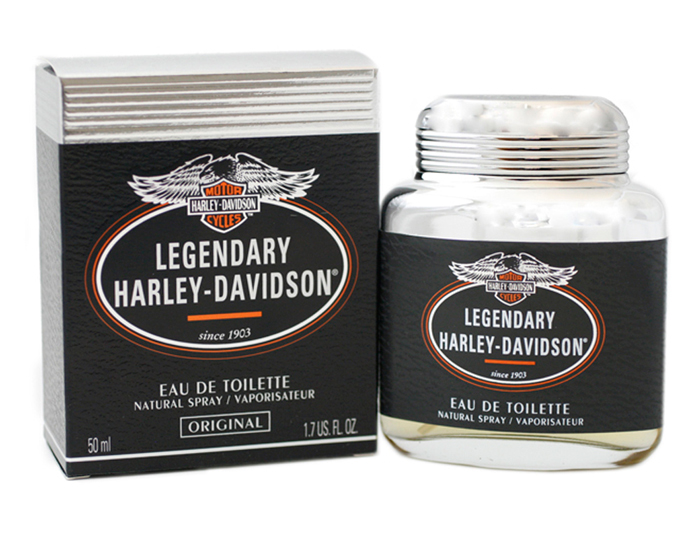
Image via aazperfumes.com.br
Obvious? It’s hardly a surprise that these brand values include: freedom, authenticity, masculinity, toughness…and have absolutely zero to do with wanting to smell charming.[4]
Lesson #3: Brands Must Not Get Lost in Translation
American companies in particular have a long and checkered history of making blunders beyond their ethno-centric shores. General Motors, Pepsi, General Mills and Revlon are among the brands to have messed up on the world branding stage.
Even in the increasingly global marketplace, regional and national differences in traditions, cultural norms and taboos still matter greatly. Well-known translation examples fill the pages of business school case studies.
General Motors introduced the Chevy Nova in Mexico, which translates as “It doesn’t go.” Coors Beer messed up the translation of the tagline, “Keep It Loose” into Spanish as “Suffer from Diarrhea.” In Taiwan, “Come Alive With Pepsi” was interpreted as “Pepsi Brings Back Your Ancestors From the Dead.”[5] Scandinavian vacuum manufacturer Electrolux launched an American ad campaign with, “Nothing sucks like an Electrolux.”
Kellogg’s
Occasionally, deeper cultural gulfs are breached at great expense. In 1994, Kellogg’s invested $65 million introducing its Corn Flakes breakfast cereal to the massive consumer market in India. However, a light breakfast is not the way Indians prefer to start their day.

Cornflakes (Credit: fir0002/Flagstaffotos, Wikimedia Commons)
Furthermore, hot milk on cornflakes (using cold milk was unthinkable to the Indian consumer) turned the product instantly soggy.[6] Pursuing cold drinks, Nestlé fared no better with the idea of iced tea in India.
Revlon
In Brazil, Revlon launched its top-selling Charlie perfume featuring the floral scent of camellias. Since camellias are that nation’s funeral flower, Revlon’s effort was obviously wasted. Money wasted, reputation damaged, the LA Times reported in 1999 that Revlon unsuccessfully sought a buyer for their struggling Latin American businesses.[7]
Lesson #4: Brands Must Evolve With the Times and Stay Relevant
Eastman Kodak
Kodak is a prime example of a legacy brand and market leader which did not keep pace with emerging technology.
In this case, it was the move from film to digital that outdid the brand. Founded in Rochester, NY in 1888, Eastman Kodak Company sent cameras to the moon, encouraged loyal consumers to capture personal “Kodak Moments” for decades, and employed an extended family of 70,000.
Ironically, filmless photography was invented by Steve Sasson, a Kodak engineer, in the mid-1970’s. “It could have been Kodak’s second act,” reported The Street in its article “Kodak: From Blue Chip to Bankrupt.” Instead, Kodak filed for bankruptcy in 2012.
Lesson #5: Choose Your Brand Ambassadors Carefully
Putting your money where someone else’s mouth is can lead to trouble, as demonstrated by brand after brand, including market leaders like Hertz and Nike. Leveraging a CEO, an employee, or a celebrity ambassador as the face of a the brand is a risky business strategy due to the unpleasant surprises that can — and do — crop up.
Hertz
As the very prominent longtime spokesperson for Hertz Car Rental, National Football League hero O.J. Simpson, known as “The Superstar,” had a locktight association with the brand.
The handsome, popular football running back was featured in a TV commercial dashing through airports to get to the Hertz rental counter. A decade as the face of the brand came to a screeching halt in 1994 when he was accused of the murder of his wife and a friend in an internationally publicized criminal trial.
Nike
In 2009, when pro golfing champion Tiger Woods was embroiled in a high-profile sex scandal, Nike suffered for having had him as their brand spokesperson. In a YouTube video aimed at damage control, Nike has Tiger’s father asking him what he was thinking.
The awkward video has had more than 4 million views but raises more questions than it answers. Nike’s bad luck continued with other disgraced sports figures: Lance Armstrong and Oscar Pistorius.
According to an article from London’s Cass Business School, personal circumstances are impossible to predict and extremely difficult to mitigate risk. The lesson learned is “to cut the ties between the brand and the brand ambassador as quickly as possible.”[8]
In all cases perhaps one of the biggest learnings is you should most definitely conduct a brand audit to evaluate your brand’s weak spots and identify new areas for innovation and growth before rushing headlong into a new venture.
Five Questions to Consider:
- Do any other epic flops come to mind, and if so, do you think one of these five reasons accounted for the failure?
- Would you say that having a popular brand ambassador is worth the risk?
- Can you think of other branding examples where a thorough brand audit and proper market research could have avoided a huge mistake at great cost?
- In addition to Kodak, what other brands lost their way by failing to use brand audits, purchaser personas or keep up with rapidly changing consumer preferences in the 21st century?
- Which do you think are the world’s top 10 most valuable brands in 2016…and why?
You may also like:
• Brand Management: Top 10 Tips for Managing Your Brand Reputation
• How Brand Purpose = Purchase = Increased Profitability
• Rebranding Strategy: Why Your Rebrand Must Embrace Storytelling
• Brand Profiling: How to Use Emotion to Make Your Brand More Profitable
• Rebranding Strategy: Using Premium Repositioning To Increase Profitability
• Brand Profiling: Top 6 Components to Creating a Strong Brand Personality
• Brand Audits: 10 Things Successful Brand Owners and Managers Must Know
• Brand Personality: Is Your Brand’s Character Big Enough to Compete?
[1] http://www.wsj.com/articles/bill-gatess-favorite-business-book-1405088228
[2] http://www.nytimes.com/1986/11/09/business/pushing-fashion-in-the-fast-lane.html?pagewanted=all
[3] http://www.huffingtonpost.com/the-daily-meal/6-hilarious-food-and-drin_b_5055465.html
[4] http://www.casestudyinc.com/harley-davidson-brand-extension-failure
[5] http://www.namedevelopment.com/naming-faux-pas.html
[6] https://www.linkedin.com/pulse/attempt-analyze-mistakes-corrections-kelloggs-made-india-utkarsh
[7] http://articles.latimes.com/1999/oct/02/business/fi-17749
[8] http://www.cassknowledge.com/research/article/beware-when-brand-ambassadors-go-astray
Brand Equity: How to Measure the Strength and Effectiveness of Your Brand
/0 Comments/in Brand Audit, Brand Auditing, Brand Audits, Brand Culture, Brand Loyalty, Brand Personality, Brand Profiling & Positioning, Brand Promise, Brand Relevance, Brand Research, Brand Values, Brand Voice, Branding, Business /by Lorraine CarterAccording to statistics, 88 percent of consumers say quality makes them loyal to a brand, and only 50 percent say price is their primary concern. [1] Also, when people have a negative experience with a brand, 50 percent said they were unlikely to consume content from that brand again. Clearly, this data shows how important it is to ensure your brand is sending the right messages to your customers, and making them want to align with it for the right reasons.

Image via www.business2community.com
What is a Brand, and Why is Brand Equity So Important?
Your brand encompasses your total offering to your customers,[2] from what it stands for, to its personality, the experience it gives your customers, what it promises to deliver consistently, the language, tone of voice and messaging it uses to express itself throughout its communications, the fundamental culture of the organization it represents, its brand collateral and the people who represent it.
In short it’s the sum of all its parts from the quality of its offering to its attributes and the emotional meanings associated to it together with all its brand collateral which includes visual identifiers like its logo, website, packaging, printed literature, trade stands, staff uniforms, interior and exteriors site design and signage, vehicle livery, video content and so forth. All of these elements collectively are what make up your brand when they all consistently and congruently engage your primary audience in a way which is relevant to them, yet are distinctive, different and memorable.
Brand equity is then derived from the overall perception of your brand, the way customers perceive your total brand offering, products or services, rather than the just the isolated features and benefits of the offerings themselves. When customers have a favorable brand perception with a consistently good experience, it’s far more likely they’ll remain loyal to your brand, and recommend it to others. In order to achieve strong brand equity, your brand needs to be unforgettable to your customers — it must resonate both with their hearts and their minds.
However, strong brand equity has more advantages than just customer loyalty: [3]
- It enables you to form stronger ongoing relationships and negotiating power with vendors
- Positive brand equity supports long-term company growth e.g. expansion into new markets, product extensions etc.
- Strong brand equity could partially shield you if you hit a bump in the road e.g. reputational ramifications related to something unusual such as defective product or atypical manufacturing delay — assuming you handle the situation appropriately
- Fundamentally customers are willing to pay more for a brand they trust and value
Although brand equity may seem intangible, it has real dollar, euro, or pound value. Brand equity can be tracked and measured using a combination of specialist research and specific algorithms applied on a comparative annual basis.
Measuring brand equity accurately is a niche expertise, with a number of companies specializing in this particular field. Interbrand is one of those companies and they annually track the brand equity value of companies and brands from year to year. By way of example, in 2014 the brand equity of credit card company American Express was $19.5 billion. That figure is impressive in itself, but it’s even more striking to note the brand’s equity value had grown 11 percent from the previous year. [4]
Evaluating Your Brand Equity: Auditing its Current State and Identifying Weaknesses
The first step in analyzing your brand equity is to get a reading of customer perceptions. It’s also important to research employee perceptions for comparative alignment. If there are underlying problems with a company’s brand culture there are also likely to be underperformance issues coupled with incongruent communications that customers will pick up on — all of which means they will be less likely to embrace your brand, and may even doubt its authenticity, which in turn causes a lack of trust.
A brand audit health check is a very useful and practical way to gauge how your primary audience and staff feel about your brand. It can also enable you to identify weaknesses that might not have been noticed previously. Once you identify weaknesses and inconsistencies in your brand, you’ll be in a much better position to convert them into strengths, or at least minimize the aspects of those weaknesses that make your brand less effective when pitched against your competitors. A brand audit health check also enables you to uncover and identify new opportunities for growth and innovation.
Make Your Brand Stronger using Keller’s Brand Equity Principles
When working with our clients to help them develop stronger brand equity, we also advocate principals from Keller’s Brand Equity Model, also known as the Customer-Based Brand Equity (CBBE) Model. It suggests before you’re able to strengthen brand equity, you must first shape how customers think and feel about the brand. [5]
The model is a pyramid shape, with brand identity at the bottom. That section represents the key characteristics and personality of the brand. It’s important customers recognize those attributes correctly, and believe they are different from what competitors offer.
The next level of the pyramid relates to brand meaning. In other words, what does your brand stand for, and how well does it meet customers’ needs, both in terms of performance, and on social and psychological levels? Think about the ways you want customers to experience your brand, and use those factors to create your brand personality and key characteristics.
Brand response represents the third tier of the pyramid. Credibility, actual and perceived quality, and comparisons with competing products all help shape brand response. Your goal is to make your brand evoke direct feelings and innate emotions.
The top level of the pyramid is brand resonance. When customers actively engage with your brand even when not purchasing it, that demonstrates brand resonance, as does a desire to be associated with a “community” of fellow purchasers. Customers also show brand resonance through behavioral loyalty, such as repeat purchases.
Measuring Brand Equity with the Six-Stage Brand Development Model
The six-stage brand development model is a diagnostic tool that combines proven metrics and a framework to guide brand equity strategies. Below, you’ll find the different characteristics a brand should have [6], plus how to make improvements if necessary.
- A Brand Should Be Recognizable: If your brand lacks recognition in the marketplace it’s crucial to develop your brand strategy and enaction it tactically with a fully intergrated branding plan in order to raise its profile. Brand recognition increases through repeated exposure.
- The Brand Must Be Memorable: The brand should be among the first called to mind when customers decide what to purchase. If that’s not happening, educate your target market about what your brand offers and why it’s unique – while remembering to enage your aduience at both emotional and rational levels.
- A Brand Should Be Viewed Favourably: As we often remind our clients, it’s not enough for people to be aware of a brand. The target audience must also believe the brand is able to meet their needs with trust and respect for what the brand represents.
- A Brand Should Be Distinctive: When customers are ready to buy an item (product or service), they must feel compelled to do so because they think the product offers a unique brand promise unlike what any competitors can provide. Brand perception occurs at both functional and emotional levels, so the goal is to position your brand effectively by stressing attributes that motivate purchases.
- The Brand Must Be Preferred: Ideally, customers will prefer your brand over all others, and be willing to purchase it repeatedly. If preference for your brand is low, you’ll need to evaluate why through a brand audit and then implement changes based on the analysis and findings made. Fundamentally you must build brand trust if you want to engender long term brand loyalty.
- Your Market Must Be Satisfied with the Brand: Ideally, customers will be so happy with what your brand offers they aren’t just personally content, but eager to recommend your brand to friends — become brand champions. If that isn’t currently happening, you may need to evaluate where the discontent lies and work on improving your product or service in terms of both percieved and actual quality.

Image via www.mindtools.com
Let’s briefly examine three case studies where improving brand equity was the central goal:

Image via www.starbucks.com
Starbucks
Starbucks has become a global brand worth $10 billion. In 2011, the brand went through a brand identity expansion to boost brand equity. A recognizable green mermaid traditionally decorated bags of the brand’s trademark coffees.
However, Starbucks wanted to expand its future vision by also using its identity more broadly on other products besides coffee, and associate it with offerings like teas and lemonades. The transition to use the mermaid logo more broadly was lauded by industry experts [7], with some believing strongly the broader use of the logo would trigger new growth and bolster recognition, without compromising acquired brand equity.

Image via www.veritaswines.com
Veritas Winery
Established in 2002 as a family-run business, Veritas Wineries was one of the first businesses of its kind in Virginia. The company realized its history and provenance helped establish its brand equity and wanted to implement some brand enhancements without compromising its valuable legacy.
The company commissioned a full brand audit, which resulted in small but meaningful changes [8] to the brand’s identity and made the overall brand more consistent to promote prolonged marketplace success. These alterations have enabled the brand to maintain its dominance, despite increasing competition.
Coca-Cola
Coca-Cola used “Open Happiness,” as a global campaign, to appeal to its consumers’ desire to feel optimistic and be comforted despite a weak economy. At the time, it was the brand’s first new campaign in three years. Advertising spots ran in both print and television media.
Although previous campaigns won awards, some analysts felt they required localized tweaking to resonate with culturally different audiences in different parts of the world. [9] The intention was that “Open Happiness” would have mass worldwide appeal. In the end, that goal was achieved, and the campaign achieved widespread industry praise for its ingenuity.
In conclusion, brand equity is measured one brilliant customer experience at a time. That’s why it’s so important to maintain a positive brand tone, understand how to relate to your target audience in a way that matters most to them, while simultaneously meeting their needs. Building and maintaining brand equity is an ongoing process, remember successful brand building is as much about all the small things you do consistently well coupled with the bigger campaigns and new initiatives.
Key Takeaways:
- Brand equity can make the difference in how customers experience your brand, and whether they want to align themselves with it.
- Brand equity is derived from customer perceptions. Strong brand equity increases the likelihood customers recommend your brand to others.
- A brand audit can indicate how customers perceive your brand, and enable you to identify weaknesses.
- Brand equity is tied to how customers both think and feel.
- Brands should be preferred, distinctive, favorably viewed, recognizable and memorable if strong brand equity is to be achieved.
Questions to consider:
- What actions or brand strategies could be implemented to increase customer engagement with your brand?
- What would help improve the actual and perceived quality of your brand?
- Have you taken steps to become informed and evaluate your brand’s weaknesses compared to competitors?
- Do you feel your brand adequately conveys why and how it meets your customer needs?
- Does your brand connect with people globally, and is that necessary for its brand equity?
You might also like:
• Brand Personality: Is Your Brand’s Character Big Enough to Compete?
• Rebranding Strategy: Why Your Rebrand Must Embrace Storytelling
• Brand Loyalty: 5 Key Steps to Building Your Loyal Fan Base
• Brand Audit: Tips for Determining Your Brand’s Health – Can It Be Improved?
• Humanizing Your Brand: Why It is Key to Commercial Success
• Brand Differentiation: 30 Ways to Differentiate Your Brand
• Brand Profiling: Top 6 Components to Creating a Strong Brand Personality
• Creating New Brands: Top 10 Tips for Brand Success
• Brand Profiling: How to Use Emotion to Make Your Brand More Profitable
[1] Eric Hammis, http://www.business2community.com, “How Important is Brand Identity?”, April 2015.
[2] Lois Geller, http://www.forbes.com, “Why a Brand Matters”, May 2012
[3] John Fatteross, http://www.thehartford.com, ” Advantages of Strong Brand Equity”
[4] Jennifer Connelly, htttp://www.entrepreneur.com, “‘Brand Equity’ is an Intangible That’s Worth Real Money”
[5] https://www.mindtools.com/, “Keller’s Brand Equity Model: Building a Powerful Brand”
[6] http://rockresearch.com/a-brand-development-model-how-to-define-and-measure-brand-equity/, “A Brand Development Model: How to Define and Measure Brand Equality,” December 2013
[7] Carl Johnson, http://www.adage.com, “Why Starbucks Logo Change Doesn’t Equate to Brand Change,” January 2011
[8] http://www.designbywatermark, “What is a Brand Refresh?”
[9] Betsy McKay and Suzanne Vranica, http://www.wsj.com, “Coca-Cola to Uncap ‘Open Happiness’ Campaign” January 2009
About
Persona Branding & Design Consultants
Contact: Lorraine Carter
T: +353 1 832 2724
Carra House
Howth, Co. Dublin, Ireland
Copyright © 2007-2022 All rights reserved.
Persona Design Consultants Ltd.
Registered in Ireland: No. 201997
Member of


